VOL. 93 Tuesday, 27 August 2024 / 23 Sv 5784
a closer Jewish community

The Jewish Report stalwart Ramona Freedman and her husband, Oliver, recently made Aliyah. She discusses the early days of their new beginning (see page 8).

VOL. 93 Tuesday, 27 August 2024 / 23 Sv 5784
a closer Jewish community

The Jewish Report stalwart Ramona Freedman and her husband, Oliver, recently made Aliyah. She discusses the early days of their new beginning (see page 8).
ANNE-MARIE ELIAS

We tend to associate time management with our work schedules or with the extracurricular activities of school children. It is important, however, to utilise these same principles in our dayto-day lives.
A quick and obvious definition of time management is the process of organising and planning how to divide your time between different activities.
So, let’s start with a 24-hour clock and consider how you spend your time. What is productive? What is wasted? What is controlled by others. The first thing to allocate is sleep. This may not be the magical eight hours that we read about but needs to provide you with adequate restoration, reenergising and revitalisation.
Next, ask yourself whether you skip meals. My dietitian colleagues believe that we need to eat five to six times each day, starting with breakfast. Our meals should be nutritious and appealing. From a mindfulness perspective, think colour, taste and texture. Food is important because it provides us with energy. If we expend energy on our daily activities, we need to replenish it – energy out requires

energy in. Now think about how else you spend your day. How much time do you spend at or on work? Where and when is your “me” time? Is there couple and/or family time? Exercise? Time with friends? Learning and well-being? Meditation? Relaxation?
How do you manage all these elements and prioritise them? It is important to have a schedule. Some aspects of the schedule will be fixed and others flexible. Everything needs to be in your diary. If it’s not written down, you will not see it as a commitment. Doing so is also a good
way to reschedule something if you get ‘a better offer’.
Eleanor Roosevelt, the wife of fourtime US president Franklin D., saw time a wonderful blueprint to remind us about managing our thinking process and encouraging us to be more in the moment. She said: “Yesterday is history. Tomorrow is a mystery. Today is a gift –that’s why we call it the present.”
As adults we can spend a lot of our thinking time in the past. Learn to recognise when you are ruminating on negative aspects of what was. Think
also about the positives – the pleasant memories. Consider it in these learning terms: the benefit of hindsight.
As we don’t possess a crystal ball, we can’t certifiably predict the future. Furthermore, thinking the worst only serves to exacerbate stress, tension and, in extreme cases, brings on depression. If you are prone to worrying or overanalysing, you are wasting time. Psychologists consider these unhelpful thoughts to be bad tenants taking up residence in your brain. Learn to recognise them early so you can move on.
Is spending time on social media or the internet, watching or reading countless news reports on the same, often destructive, subject a positive experience? If not, don’t do it. Staying connected is one thing, but miring oneself in misery can have a negative effect on our wellbeing.
Whilst we need social connections, ensure that those with whom you associate are energy givers, as distinct from energy takers. Do you give time to people where the result is detrimental to you? If so, cease and desist, this practice.
UK psychotherapist Julie Twist put it well when she said: “it’s time to stop wasting years of your life and live the life you want, your way.”
Anne-Marie Elias is a psychologist in clinical practice for 25 years.
6. Rosh
7. Window boxes, briefly?
8. Homeric word of woe
9. Use Hulu, e.g.
10. "Achi" alternative
11. Bit of a chuckle
13. Authoritative statement
18. Hatzolah destinations: Abbr.
21. Home of Coke: Abbr.
24. Makes into a mummy
25. Highest position
26. Yutzes
27. Angels, on the scoreboard
30. "Annabel Lee" poet's monogram
33. "Can ___ frank?"
35. Drop a fly ball, e.g.
37. "Oh no!"
38. "Curb" comic, to friends
39. Org. especially busy in 2020
40. Highway menace
41. Lets out, as a fishing line
43. Selects, as artworks
44. What we becomes in Israel
45. Disney's dwarfs and others
48. Not so sharp
49. Punching bag in the throat, in cartoons
52. Common American tree
56. The longest serving leader in Jewish history
57. Electrify, in a way
58. 1040 reviewer, briefly
59. "Go, bullfighter!"
60. Abner to Ner
62. Former Giant and Rams star receiver, for short
ROBERT GREGORY AUSTRALIAN JEWISH ASSOCIATION
When you think of the issues you want your local council to focus on, what springs to mind?
Perhaps fixing the local pothole or providing some relief from high rates. If you’re like me, then solving the Middle East conflict, isn’t at the top of your expectations from your representatives from the third tier of government.
Roads, rates and rubbish are no longer interesting enough for some councillors across Australia, who are under the impression that they are serving in the United Nations.
Recently, Canterbury-Bankstown Council, in southwest Sydney, passed a motion to start the process of implementing a boycott of Israel. AntiJewish prohibitions have a long and ugly history. The latest manifestation, boycotting the only Jewish State, is led by a shady outfit called Boycott, Divestment and Sanctions (BDS).
BDS is widely recognised as antisemitic and has been condemned across the political spectrum, including by the prime minister and state premiers. However, the message hasn’t filtered down to some local councillors who think they have a better grasp of foreign policy.

The debate at Canterbury-Bankstown was heated. Police were called and there are allegations that death threats were made.
A number of Melbourne councils, including Merri-bek, Maribyrnong and Darebin have adopted Israel-boycott motions.
Aside from serving to increase community tensions and make Jews feel unwelcome, these motions cost ratepayers dearly. In 2011, in Sydney’s inner-city, Marrickville Council, toyed
with the idea of an Israel boycott. The cost was in the millions, including $3 million alone to remove the council's Hewlett Packard computer systems. Accounting for inflation and the larger size of many councils, the cost today would be far greater.
It turns out that there is an Israeli or Jewish contribution in many parts of our economy and tearing up signed contracts comes at a price.
Boycotting ‘Zionist’ Coca Cola and McDonalds may sound easy, but
imagine explaining to hardworking ratepayers that their rates will increase significantly because councillors want to throw out perfectly good equipment.
These foreign policy forays are often the domain of inner-city activists from the Greens or socialists. However, a boycott motion was backed by Sydney’s Lord Mayor Clover Moore, while the Canterbury-Bankstown motion was an initiative of Labor councillors.
From Byron Bay to Hobart, local councils have passed motions about the Middle East conflict, and extremist activists have many more in the pipeline.
The actions of any local council in Australia will, of course, go unnoticed by anyone in the Middle East, but, as mentioned, there is a real risk that they will cost you money and damage social cohesion.
For supporters of Israel, the upcoming council elections are more important than usual.
Victorian local government elections will be held in October.
Before you vote, consider carefully whether the candidate you select is likely to spend your money trying to solve the Middle East conflict.

Yom Kippur remains the most sacred and reflective day in the Jewish calendar. Marked by solemn prayers, fasting and the hauntingly emotional Unetaneh Tokef prayer with its frightening Who will live and who will die line, Yom Kippur brings us face-to-face with our mortality, urging us to confront the inevitable end that awaits us all.
Most of us prefer not to dwell on our own mortality, yet the saying Nothing is certain, except taxes and death highlights the fact that death is really the only certainty. Taxes can vary or even be avoided, but death is inevitable. That realisation may be uncomfortable, but it can also serve as a powerful motivator for action – particularly in how we choose to live our lives.
Yom Kippur's emphasis on accountability prompts us to make amends for past wrongs, but it also encourages practical steps to make our interpersonal relationships better through our improved behaviours. This can include making decisions about how to ease the burden on our family after we are gone.
Pre-planning or even pre-paying our own funerals is not just about logistics or ensuring that our final wishes are respected. It is also an act of kindness to our loved ones by sparing them the complex tasks and decisions during a

most challenging time. Taking control of our end-of-life arrangements, we provide clarity and peace of mind to those we leave behind.
Benefits of pre-planning end-of-life arrangements
Control your wishes: Consider how you want to be treated when you are no longer capable of making decisions or articulating them. Completing an Advance Care Plan can make your wishes clear and take pressure off your family. You may wish to include a Do Not Resuscitate (DNR) order or another
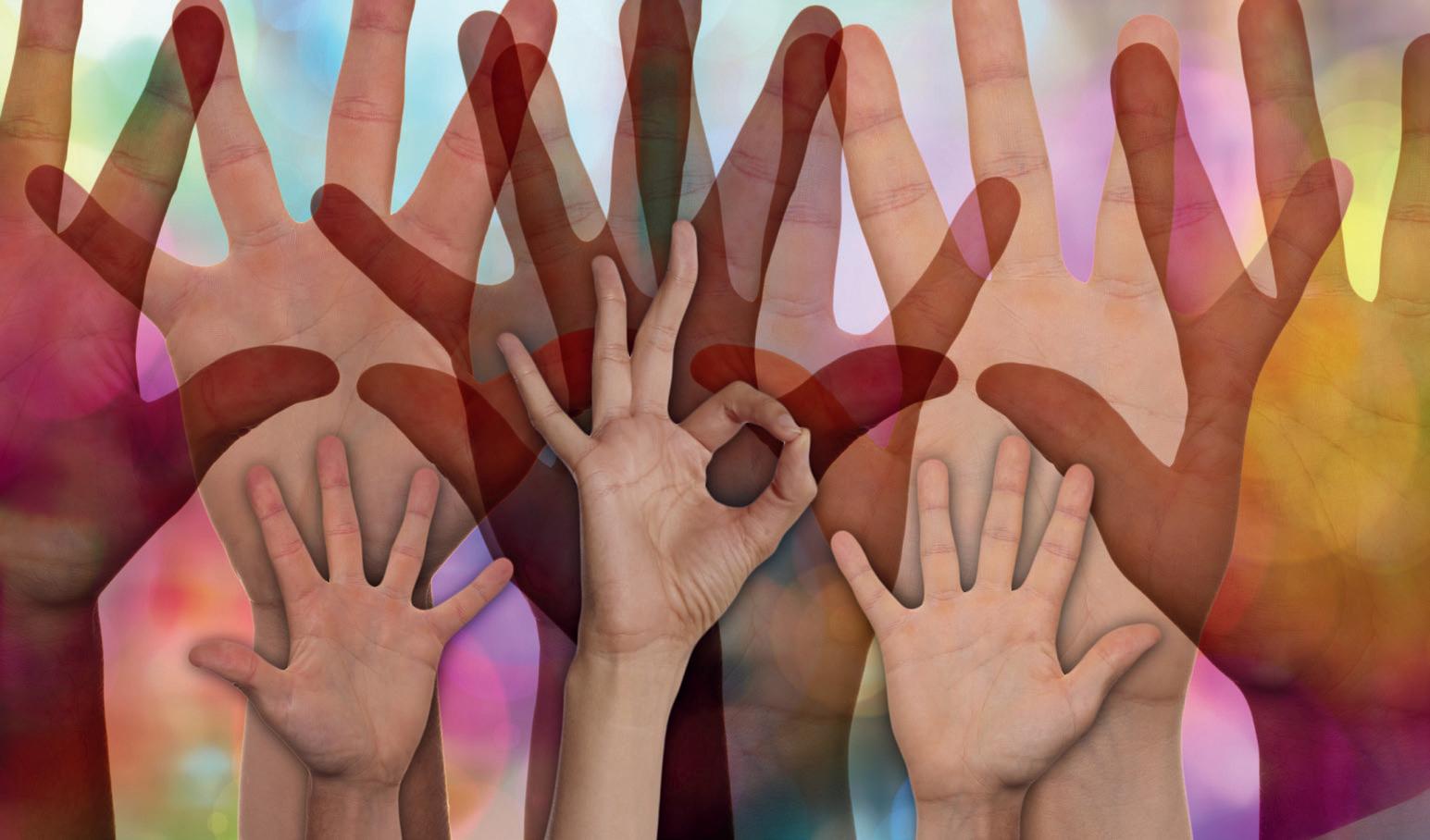
advance directive, ensuring that your wishes are followed, even if your family disagrees. Also, consider whether your Will is up-to-date and includes your attitudes towards voluntary assisted dying and organ donation. Discussing these topics with your family is crucial.
Provide financial relief for your loved ones: Funerals are expensive. By prepurchasing your funeral and burial plot, you can protect your family from future inflation or unexpected expenses. Many funeral homes offer payment plans to spread the cost over time, making it a
more manageable expense. Pre-paying your funeral reduces the stress on your loved ones at what will already be a stressful time, allowing them to focus on grieving and supporting each other.
Leave a legacy of thoughtfulness: Preplanning your funeral is an act of kindness and thoughtfulness. It shows your loved ones that you care about their wellbeing, even after you are gone. You can assist by creating a digital or hard-copy folder with all the information they need – legal documents, names, addresses, dates of birth/death of family members, your own Hebrew name, important contacts, passwords to your computer, bank accounts etc. Make sure your loved ones know where this folder is and how to access it.
Pre-planning your funeral not only aligns with the values of Yom Kippur, when taking responsibility for your actions and making thoughtful, deliberate choices is central, but it is also a considerate way to live with intent and providing peace of mind for you and your loved ones.
Bet Olam Jewish Funerals invites you to contact its caring funeral directors to discuss how you might like to pre-plan or pre-purchase your funeral. No matter your age or health, it’s never too early to take this thoughtful step. Do not hesitate to phone 9883-6237 for advice and support.
Kathy Kaplan OAM is a board member of Bet Olam Jewish Funerals and the founder of Impact for Women.
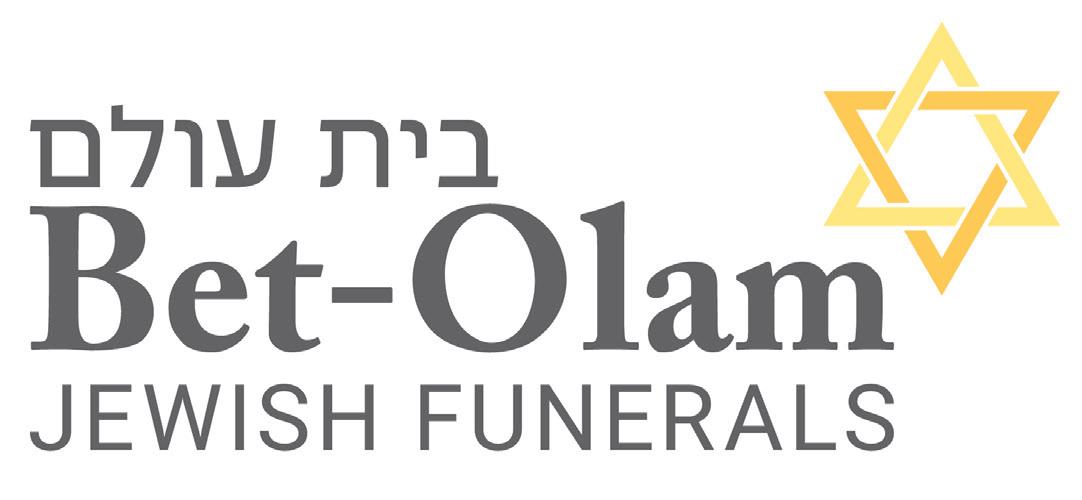


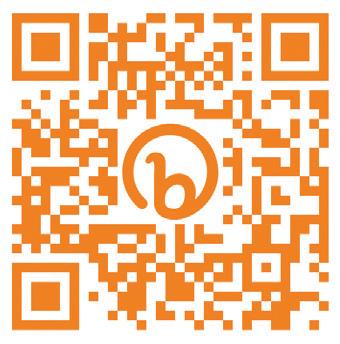
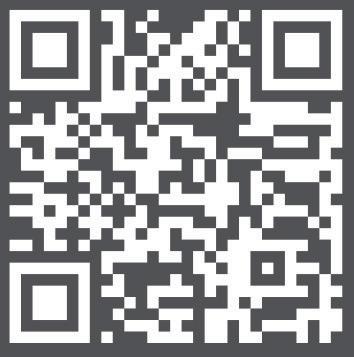
ELLANA AARONS CEO B’NAI B’RITH AROUND
In a year marked by unparalleled conflict abroad and division at home, Mitzvah Day 2024 offers us a moment to heal, reconnect and focus on what truly matters within and between our communities – building a better society for all.
Mitzvah Day was born out of the belief that we can make a positive difference to our world by taking action – together.
On a single day in November, Mitzvah Day, the Jewish community, together with other communities and individuals wanting to improve the world in some small way, take part in a range of activities, simply to help others.
Individuals and organisations on or around Mitzvah Day collect and distribute food for the needy, befriend and sing to seniors and others that are socially isolated, clean parks, or send gifts to needy children, just to name a few examples.
This year, we stand united in defying the forces that seek to divide us, coming together to support our local charities and build bridges of commonality. We are, quite simply, Stronger Together.
While Mitzvah Day officially takes place on 24 November, we believe every day can be a Mitzvah Day.
Mitzvah Day Australia, powered by B'nai B'rith, is committed to promoting and supporting all projects that embody the spirit of the day, whether on the official day or at any other time.
Your efforts, big or small, contribute to a continuous wave of goodness across our nation. We encourage you to register your mitzvah or any volunteering opportunity with us.
By doing so, we can help promote your events, attract more participants and raise awareness for your initiatives.
If you're looking for project ideas or ways to get involved, our team is here to assist you. Please contact us at info@ mitzvahday.org.au and let's discuss how you can make a difference.
Register your interest or submit your project at www.mitzvahday.org.au
Together, let's build a stronger community and create lasting, positive change.

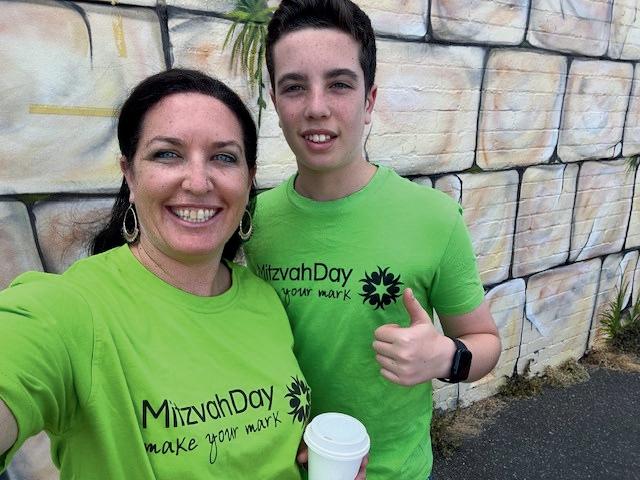






DR YVETTE ALT MILLER COURTESY: AISH.COM
Rabbi Jonathan Abraham, a 47-yearold rabbi, mohel (one who performs a brit milah, or Jewish circumcision), and father of ten from London has been held in an Irish jail for weeks, awaiting trial for the “illegal” circumcision of a baby boy. Rabbi Abraham has been denied bail, forbidden from praying with tefillin (the boxes of prayers that Orthodox Jewish men traditionally wrap around their heads and arms during weekday morning prayers), and is denied kosher food.
Limiting Jewish circumcision in Ireland
Circumcision is unusual in Ireland: only 2-3 per cent of Irish baby boys are circumcised each year. Performing circumcision is legal, but with tight restrictions. Inside a hospital setting, only medical practitioners can perform circumcision and only when it’s deemed medically necessary. The Irish press periodically highlights high-profile calls to ban circumcision entirely, calling it “barbaric” and “mutilation”.
Yet Jews, Muslims and others who wish to have their babies circumcised are allowed to hire a religious figure who’s licensed to do so. With a Jewish population of fewer than 3,000, Ireland has no Jewish circumcisers; when a Jewish family in Ireland wishes to arrange a brit milah (circumcision) for their baby son, they typically fly in a mohel from neighbouring Britain for the day.
Jews aren’t the only Irish parents who hire British circumcisers. The Dublin Hebrew Congregation, Shaarei Tzedek, notes on its website: “We receive many requests every year from non-Jews seeking this procedure for their own sons. Many mohelim from the Initiation

Society will be happy to perform the procedure…”
At just after one in the afternoon, Rabbi Abraham had performed one circumcision on an African baby boy and was about to circumcise a second baby when police knocked on the door of the home where the ceremonies were taking place. Invited in by the homeowner, they arrested Rabbi Abraham, brought him to their stationhouse, and held him for two days before charging him.
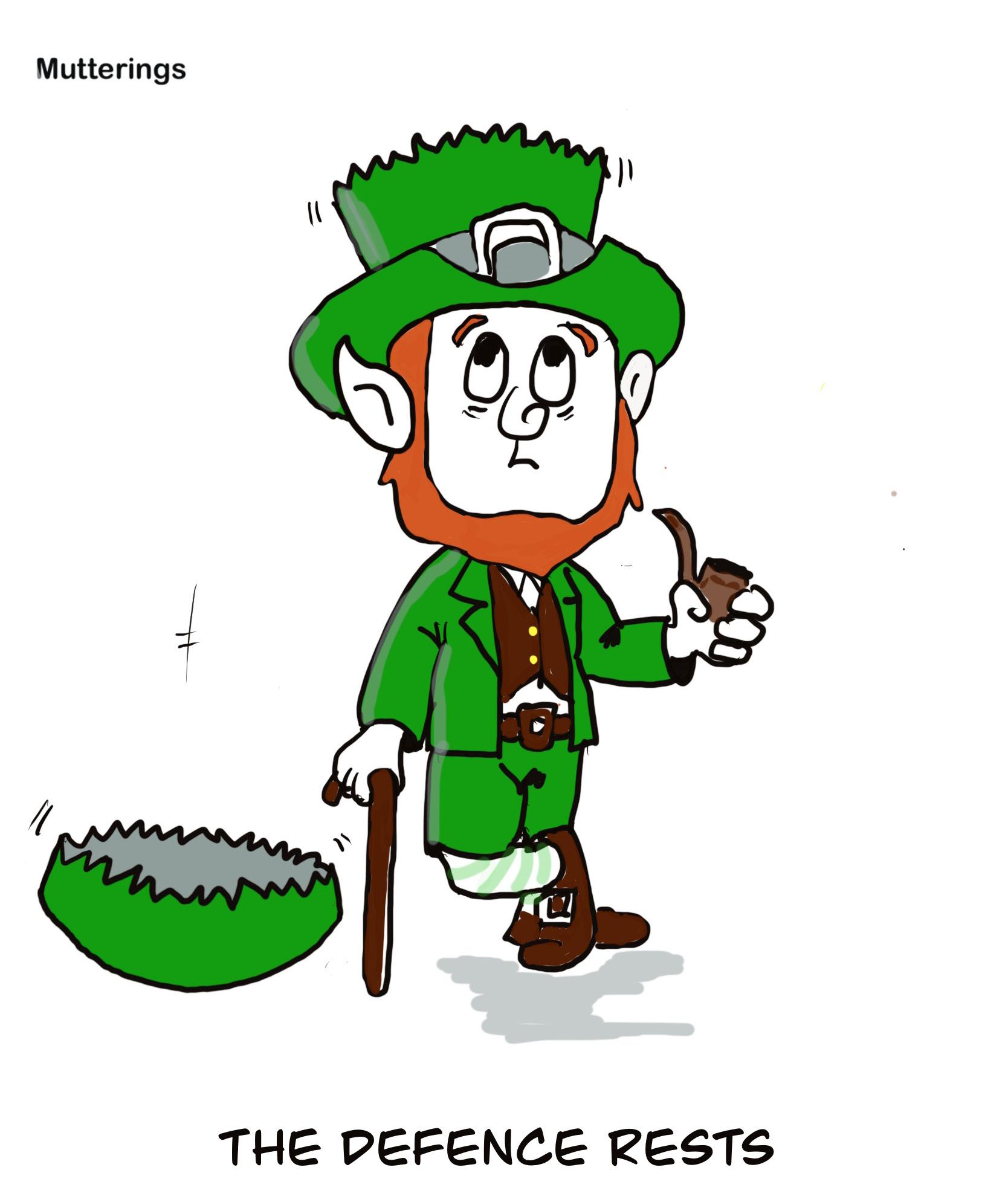
When he finally appeared before a judge, the charges against Rabbi Abraham were tinged with antisemitism prejudice. Detective Megan Furey recounted how she’d found Rabbi Abraham “dressed in a white robe, a doctor-style coat, with blue gloves and a scalpel in his hand.” Other medical equipment was present at the scene. She “observed a very young child on the changing pad naked.” The judge was told that Rabbi Abraham was a flight risk because he is wealthy.
It seems that by performing a circumcision on an African baby, instead of a Jewish one, Rabbi Abraham had exceeded his authority in Ireland and was no longer allowed to work. In a statement to Aish.com, the Initiation Society emphasised that “On the facts as we know them, we have no reason to believe that he acted unlawfully. It is also important to emphasise that there is no suggestion that the circumcisions he carried out were performed incorrectly in any way.”
When Rabbi Abraham’s lawyer pointed out that he’s a trained, licensed, and insured mohel and that he would be allowed to circumcise an African child in England, the judge noted that Ireland is not England. Rabbi Abraham was ordered to remain in Dublin’s notorious Cloverhill Prison, an institution where prison guards are under investigation for brutalising inmates. If found guilty of performing a circumcision without the correct medical license, Rabbi Abraham faces five years in jail and a fine of €130,000.
Denied religious freedom and kosher food
In Cloverhill, Rabbi Abraham’s situation is dire. He is being kept in a solitary cell, prevented from praying with his tefillin and was denied kosher food. When
the Chief Rabbi of Ireland, Yoni Wieder, heard about Rabbi Abraham’s plight, he brought kosher food to Cloverhill Prison and begged the guards to deliver it to Rabbi Abraham. His offer was refused. Rabbi Abraham appealed to Ireland’s High Court, alleging that his human rights are being abused, which is illegal under Ireland’s Constitution. During his trial, Rabbi Abraham has described his conditions over the past weeks. He’s been eating only breakfast cereal once a day. When he asked for kosher food, he was delivered a piece of chicken, which had clearly come from that evening’s prison dinner: it had been placed in a cardboard box with the word “kosher” scrawled on the outside in pen. Chief Rabbi Weider has described his frustration with Cloverhill Prison authorities who insisted that they were providing kosher food to Rabbi Abraham, while never once contacting any Jewish authority, nor any kosher caterers about sourcing ingredients. At his human rights appeal, Rabbi Abraham described his anguish at being refused access to his tefillin, which the prison insists can be used as a weapon by other inmates. “I am in a cell by myself,” Rabbi Abraham told the judge, explaining that no other prisoner would be able to grab his tefillin and use them as weapons. He also described how at least on one occasion, as he was praying in his cell, guards burst in and ordered him to strip to his underpants. Given the conditions of his incarceration, Rabbi Abraham has begged to be released on bail. The High Court trial is ongoing, but the judge, Ms Justice Nuala Jackson, has refused Rabbi Abraham’s release, though she has ordered Cloverhill Prison to give him access to his tefillin and to kosher food.
While Rabbi Abraham’s human rights appeal about the conditions of his imprisonment is ongoing, no date has yet been set for his criminal trial of illegal circumcision. The Irish police have said they will likely ask that even more charges be added to the existing charge of performing a circumcision without the appropriate license. Meanwhile, Rabbi Abraham’s wife, who works part time in London tutoring children with learning differences, is looking after their family alone.
We can all support Rabbi Abraham by making sure he is not forgotten. Follow the news of his unbelievable case and speak out when sensational news coverage distorts the facts of his case. We also can double down on our embrace of Jewish traditions as a way of showing support to Rabbi Abraham and with Jews worldwide. Let’s show the world that when one Jew is prevented from living a Jewish life, we all embrace that life even more.

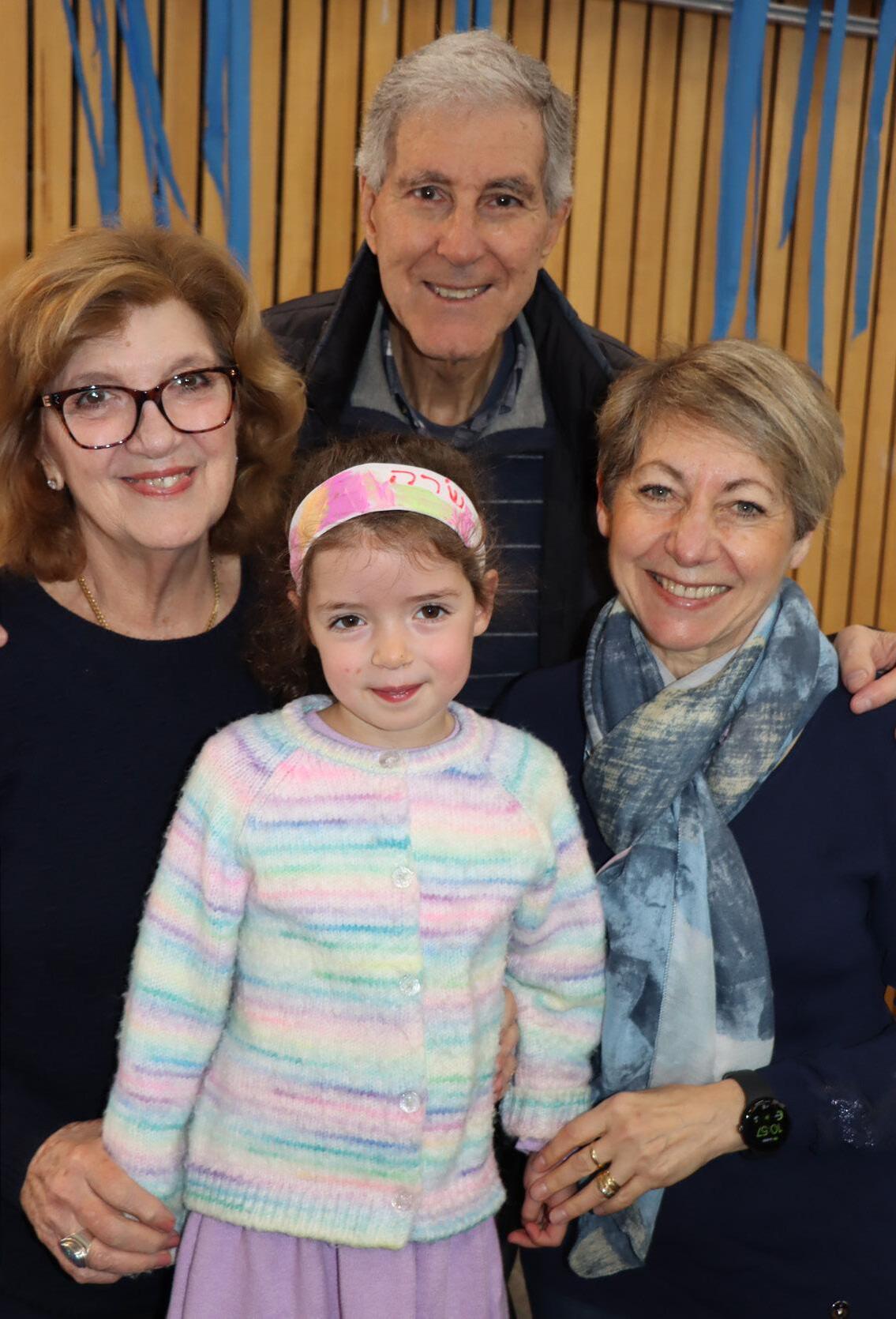
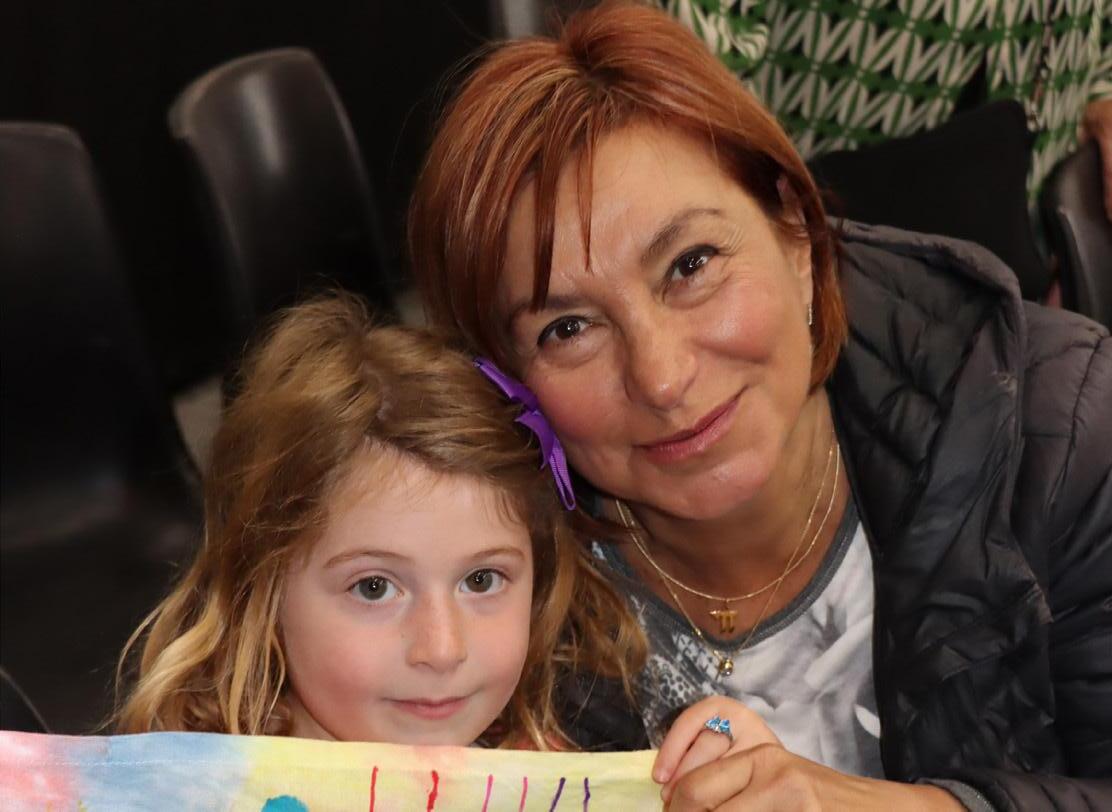

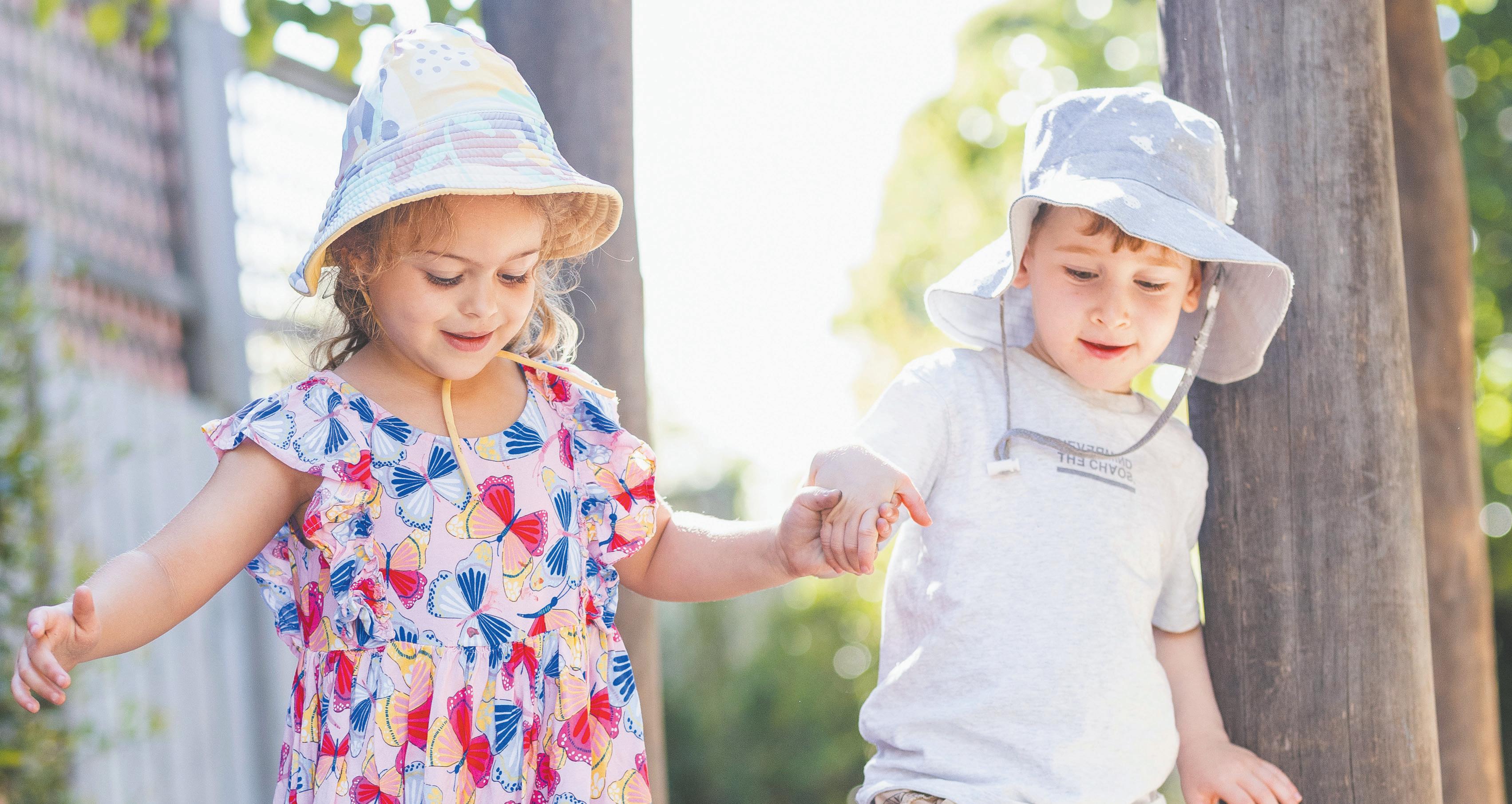
RAMONA FREEDMAN KESHER COMMUNICATIONS
I need to find some yellow ribbon. As I sit tentatively behind the steering wheel located on the left side of my car, I ponder whether there might be any haberdashery shops with ribbon trimmings in my new neighbourhood of Ra’anana?
Well, there must be. Every car seems to be sporting one tied to its wing mirrors. Why? To keep the hostages and their necessary release at the forefront of our collective consciousness. I’ll report back on this shortly.
As someone fresh off the proverbial boat, there are Aliyah discounts for all sorts of things for a couple of years. Is there a long list of items one can peruse to ascertain if they are applicable to the microcosm of each person’s world? Don’t be silly. Of course not. At least, no one has shown me.
Early on, I knew I needed to find a swimming pool to do freestyle laps at some point each week. No, I am not a super fish like our Aussie Olympic heroes. I’m just the gal who needed to start swimming post breast cancer surgery a long time ago. It helps so much. But that is not the crux of this reflection. Very quickly I discovered that Ra’anana has a sports centre, with many offerings, including a 25-metre indoor pool.
As I was about to buy a ten-swim pass with an Aliyah discount, I was asked if I also swim on Shabbat? When I said I didn’t, I received a bonus discount. I thought that was pretty cool. I had been worried about leaving my Sydney gym, where I made friends with the ladies of a certain age who attended early morning aqua aerobics classes. I knew I would especially miss my newest friend, Patricia, with her big laugh and South African accent.
Here in Israel, it was comforting to know that as I was donning my Speedo goggles, there was also a mirror-image Israeli aqua class just starting. Snap ladies.
One participant in stern, fast Hebrew told me to move to another lane (at least that is what I believe she said). I smiled

disarmingly and while I didn’t cotton on at first, her gesticulations helped. When I mentioned the one essential phrase, ‘Slicha, ani Olah Chadasha’ – sorry I am a new immigrant – her flash of anger turned into a warm welcome. Her name is Ayala, which apparently means a gazelle or a doe (no, dear readers, we are not going to break into song right now).
I wave to her each time I swim and now we are firm friends, although I secretly know that no one has the same sparkle in their eyes as Patricia.
One more thing about this pool – the

lifeguard seems to spend most of his time perched with his legs up reclining, engrossed in his smart phone. So much so that one morning he fell backwards and broke his chair! We all know that if there was any drama whatsoever, this ex-army guy would leap over his high railings and dive straight in to rescue anyone in need. Therefore, whether he watches the pool or not, his mere presence is a great comfort. As I walk out, I can’t help but notice that on the roof of the sports centre there are eight loudspeakers assembled in a circular design, not for the pumping of patriotic music, rather a vehicle for sirens to wail in case of danger. Speaking of emergencies, given ‘the situation’ I couldn’t help but notice a few new fluorescent signs stuck to the sports centre walls, pointing to the bomb shelter. I made a mental note of its direction and kept my swimming bag on a chair close to my lane on the off chance I need to make a mad dash.
There is a soulful sense of togetherness here in Israel. Although one day I was caught off guard. I entered our local library to concentrate on writing a chapter of my book (more on that another day). Upon exiting, I said a casual ‘shalom’ to the older security guard, named Betzalel. He replied in rapid Hebrew and the only word I caught was ‘coffee’. I was holding a water bottle and said earnestly: ‘No, I have a drink.
This is water’. It was only then, after he slowly repeated the words that I realised he was asking me out on a date. My eyes widened. No Betzalel, that just ain’t gonna happen in any language! Boy did my friends (new and old) laugh about that for a couple of days. These Israelis, they are chutzpahdik!
There are many shuls in our area and yes, I really feel part of the warm community at Kehilat Lev Ra’anana (KLR). In fact, I arrived a month and a half ago and every week since there have been new members joining this ever-expanding congregation. Australians, South Africans and others. It is evolving before my eyes and I love that I am a small part of its positive progression.
You want to talk brave? I also attended a local Pilates class taught in Hebrew only. Did I understand much? Almost nothing, except when the teacher opted to translate the colours of the Reformer springs into English. Dear teacher, the colours are the only Hebrew words I actually know.
So, I just did what any clueless kid would do and copied the girl next to me. I pulled out the old nugget of being an Olah Chadasha and it transformed from a creepy closeness to camaraderie in a heartbeat.
I love how many opportunities there are here. One evening, I joined about a dozen people from my local shul and area and made a barbeque. This was not in someone’s backyard.
It was organised for the soldiers on an army base in the Shomron (or as it is more often called by media around the world, the West Bank). I knew this was going to be an unusual night when an especially strong volunteer driving me pulled over early on a random Ra’anana road to recite Tefilat HaDerech, the traveller’s prayer, before we got going.
A philanthropist had donated thousands of shekels. The best quality steaks, chicken and more were brought, along with salads, dips, pita, watermelon – in short, the works.
I wore an apron with ‘Grills of Hope’ written on it, replete with a caricature of a bearded man with a Star of David front and centre, holding tongs in each hand.
It had been unusually scheduled during the nine days when we don’t traditionally eat meat, but one extraordinary soldier had just completed seven years of continuous study and celebrated his Siyum HaShas with his entire unit.
The soldiers could only eat after 10pm that evening as they had been practising for specific night manoeuvres.
They all thanked us, yet in all honesty it was for us to thank them.
When I say ‘us’, I don’t just mean the volunteers that night – I mean every single Jew around the world.
Did I find a yellow ribbon? You bet I did. So many are advocating daily on behalf of our hostages and we won’t stop. May they be released this minute.
May Am Yisrael go from strength to strength. Shalom Australia from Ramona in Ra’anana.
Ramona Freedman contributes a monthly column about her Aliyah journey. To contact her directly, please email ramona@keshercommunications.com.au

DICK GROSS AM AROUND THE COMMUNITY
We all have photos that resonate with us. Perhaps family pics or images of tragedy. The black and white photograph pictured is one of mine. It shows a bunch of mid 20th century blokes looking pretty pleased with themselves. Here is the story of that photo.
Australia has skin in the game with Israel. While often overlooked, Australia was critical in the creation of Israel. It is a great example of how a couple of individuals of good heart can really help change the world. In this case, the two were Bert Evatt (often known as the Doc because of his PhD) and Abram Landa, the latter being my grandfather.
In Sydney, in the late 1920s, there were two lawyers, great friends and collaborators. Both came from impoverished backgrounds, where the father of the house had died young. They were saved only by the power of their minds.
Bert Evatt KC was a lion of the Sydney bar. Often briefing him was Abe Landa, a Jewish solicitor with a largely industrial practice. Bert Evatt had a spectacular career as a lawyer, intellectual and High Court judge. At age 36, he is the youngest judge ever appointed to the High Court.
Their most famous partnership was not so much a collaboration, but an accident of history. It occurred when a case Abe took to the High Court came before the Full Court, including the Doc. When a young Jewish immigrant fell into unfenced, unsigned roadworks and drowned, Abe helped the family take a legal action. The family lost the case Chester v the Council of Waverley Municipality, but in a powerful dissenting judgement then Justice Bert Evatt sowed the seeds for future negligence claims. Gideon Haig’s book “The Brilliant Boy” provides detail.
The brilliant boy of the title could have been Bert, but was actually a description of the Jewish boy who died. Bert was also notable for being the High Court judge sitting alone that allowed Egon Kisch, a Jewish refugee who escaped Nazism, to remain in Sydney.
As the decades rolled on, the two men flourished. In the 1930s, Abe had a short stint in the NSW parliament, grew his practice and briefed Bert’s brother, Clive Evatt. By the 1940s, Abe was back in parliament and a rising star, eventually spending years as a Minister, with a series of portfolios in the 1950s and 60s. Bert left the High Court and became a federal politician and Attorney General. This is when the two men’s vocational lives became entwined again on the question of Israel.
Bert, ever the polymath, was deeply interested in foreign affairs. In the aftermath of WWII, he joined several overseas delegations. His intellect shone through. Accordingly, Evatt was elected president of the UN in the third session of the body (September 1948 to May 1949) just as the debate over the partition of Israel was reaching its zenith. Being UN head at this critical time was
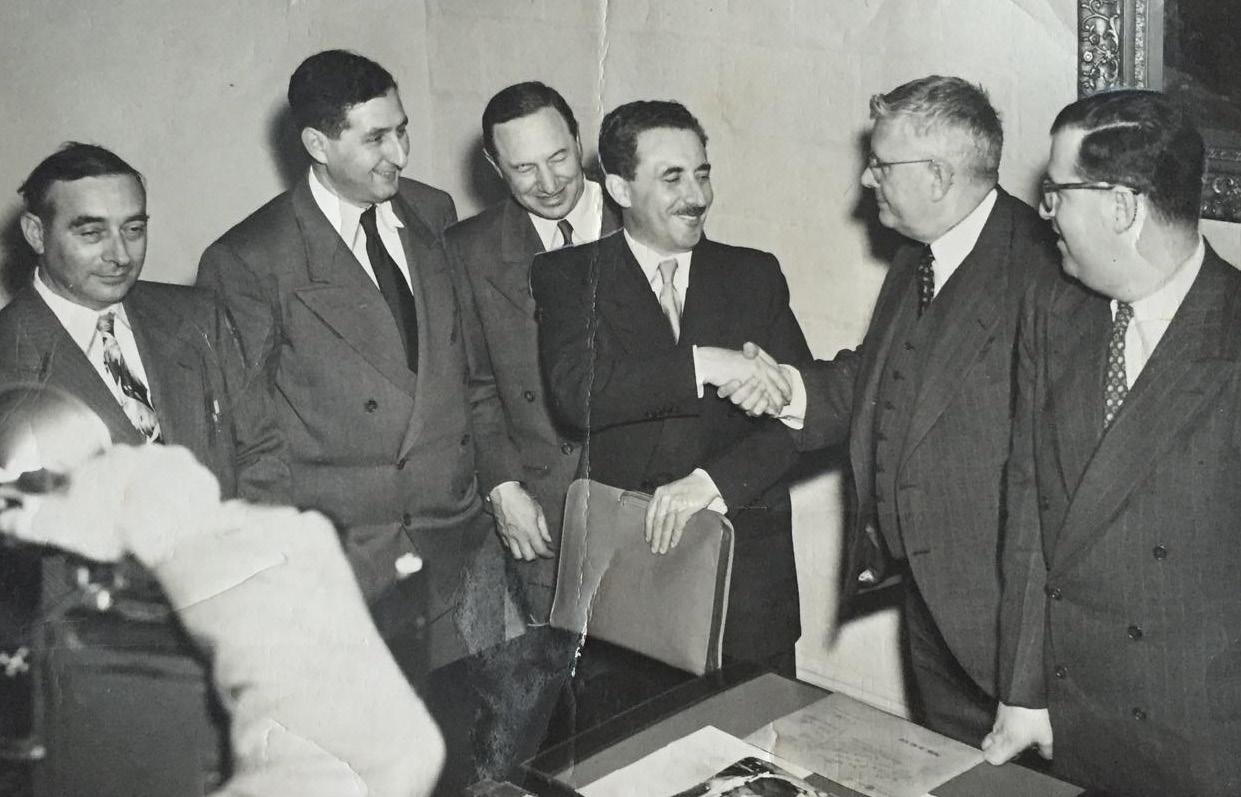
vital as it coincided with the creation of Israel. Abe immediately became his adviser. The latter was a staunch Zionist and advocate for Jews and other immigrants.
I even read a speech from the NSW parliament where, with great deference, Abe attacked Sir Isaac Isaacs, Australia first Jewish and first Australia-born Governor General, who had argued against the creation of Israel. Abe was nothing if not a fearless advocate.
As Bert became UN President, Abe role as adviser on Israel became critical. Abe stepped on to a plane, met his old friend and mentor, and pushed for the creation of a Jewish state.
Truth be told, I suspect that Bert did not need much convincing. As his presidency played out, David BenGurion, the head of the Jewish Agency, proclaimed the establishment of the State of Israel on 14th May 1948 and Israel was admitted to the UN.
My family still treasures the photo above, ravaged by time, taken as the document was signed creating Israel as a sovereign state. Pictured on the extreme left is Abe. In the middle is Bert, shaking hand with Moshe Sharett, Israel’s first Foreign Minister and second Prime Minister.
Standing next to Bert on the extreme right is Abba Ebban, statesman, also later Foreign Minister and Deputy Prime Minister of Israel.
I don’t know the identities of the two men standing between Abe and Bert. If any reader does, I would love to find out.
Like most high achievers, fate can be less than kind towards the end of one’s life. Bert became leader of the federal Opposition and lost three elections to Sir Robert Menzies.
His retirement was mired in illness and acrimony.
Abe was expelled from the ALP after accepting a position from the Libs, although there was some meeting of minds with the Labor party again late in
his life. As Shakespeare’s Mark Anthony said, “The evil that men do lives after them. The good is oft interred with their bones.” I want Abe and Bert’s lives to be remembered for the boldness of their achievements, particularly the
creation of the State of Israel, a titanic achievement.
Four-time Mayor Dick Gross is a candidate in Alma Ward in the upcoming City of Port Phillip local Council election.
How many common words of five or more letters can you spell using the letters in the hive? Every answer must use the centre letter at least once. Letters may be reused in a word. At least one word will use all seven letters and have a direct Jewish connection.
Proper names and hyphenated words are not allowed. Score 1 point for each answer and 3 points for a Jewish-related word that uses all 7 letters.
Rating: 12= Good; 18 = Excellent; 25 = Genius

ANSWERS PAGE 19
Rosh Hashana, a significant milestone in the Jewish calendar, is a time of reflection and renewal. Whether through childhood songs about the shofar, the tradition of dipping apples in honey, or gathering with family, these rituals create a consistent thread in the fabric of our identity as the People of Israel.
Yet, this year Rosh Hashana feels different. In the aftermath of the trauma of October 7, Jews worldwide approach the new year with a sense of trepidation, facing the harsh realities that war has imposed upon us.
In Israel, the prevailing insecurity and fear are palpable. Many have been forced from their homes, spending months in hotels and temporary apartments, separated from their communities and comforts. It is in these challenging times that UIA steps in to support the People of Israel, making a significant difference to the lives of the most vulnerable among us.
The shortage of affordable housing in Israel places immense strain on many elderly citizens, particularly Holocaust survivors and immigrants from the former Soviet Union, who often lack a robust support system. This is where Amigour, a UIA-supported project, offers crucial assistance. As Israel’s leading operator of public and sheltered housing for seniors, Amigour serves more than
7,500 disadvantaged elderly across the country. Currently, 2,700 Amigour residents live in Israel's south. Due to their advanced age and inability to reach shelters quickly, they remain in their homes, relying on Amigour to meet their daily needs during these stressful times.
As the High Holidays approach, UIA and Amigour are going the extra mile to provide food packages to these residents, ensuring they are well cared for during this significant and familyoriented time. For those who cannot be surrounded by loved ones, this gesture brings a sense of belonging and care.
All funds raised through the purchase of e-cards on the UIA website will be directed toward supplying these food packages to Amigour residents. In lieu of gifts for your family this Rosh Hashana, consider sending a food package to your extended family in Israel. In that way, while the world may look and feel different, know that you can make a difference to the lives of those who need your support most – the People of Israel.
To donate to UIA, go to http://www. uiaaustralia.org.au
To buy an e-card, go to http://www. uiaaustralia.org.au/e-cards
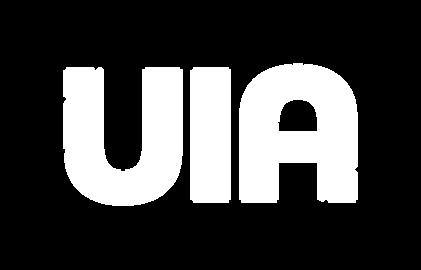
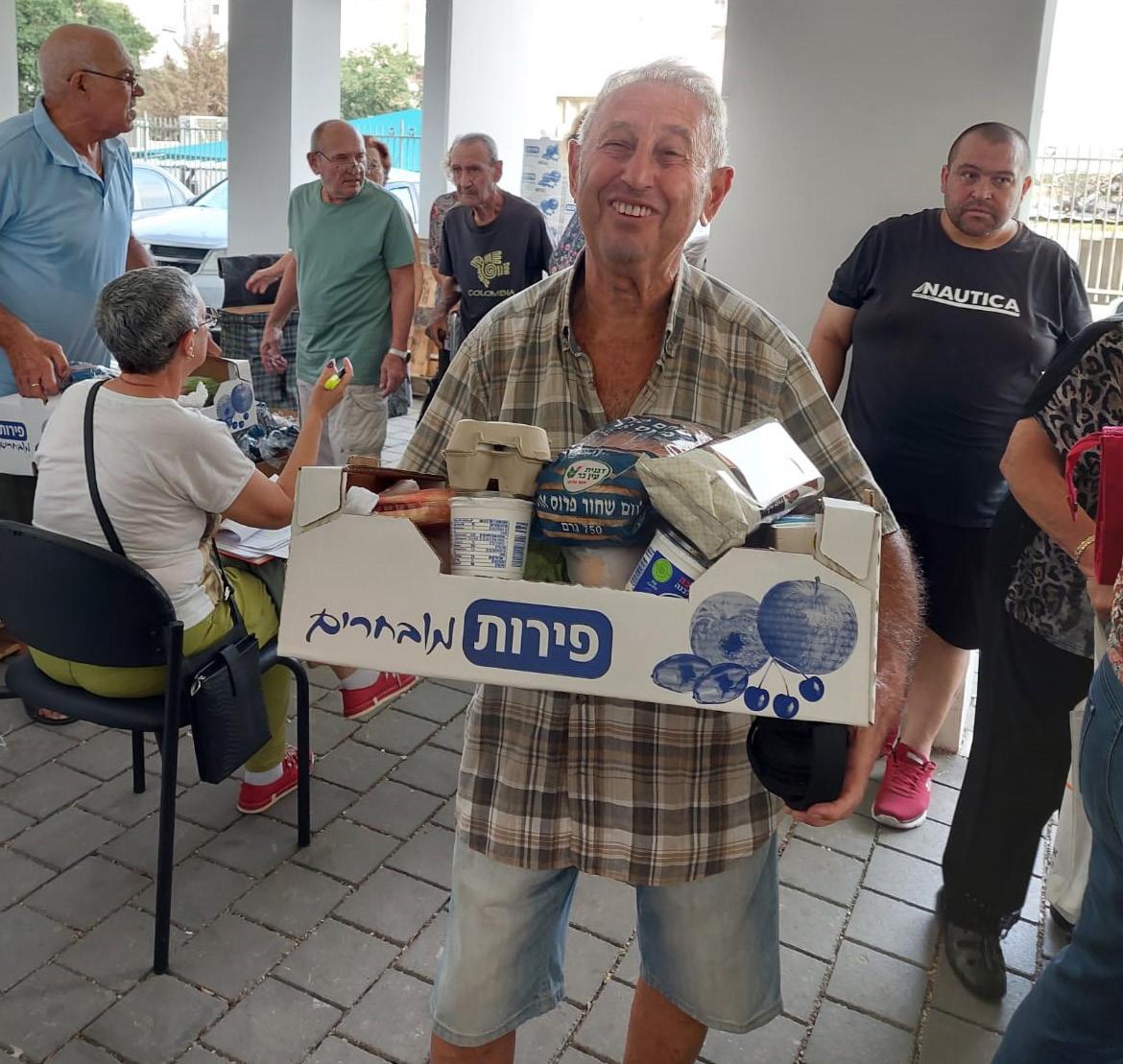
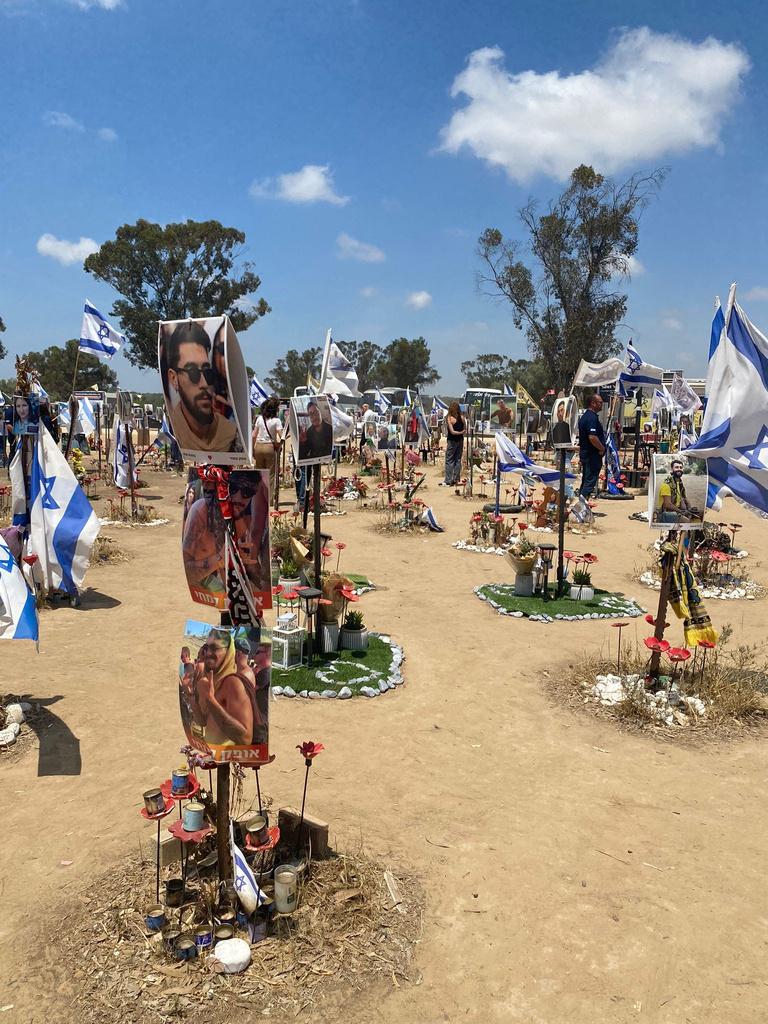

ends, Sep 14, 2024 6:49 PM Friday, Sep 20, 2024 5:57 PM Shabbat ends, Sep 21, 2024 6:55 PM
Sep 27, 2024 6:03 PM
been contributed by a third party. The opinions, facts and any media content here are presented solely by the author, and The Jewish Report assumes no responsibility for them. It is not intended as advice and must not be relied upon as such. You should make your own inquiries and take independent advice tailored to your specific circumstances prior to making any decisions. We do not make any representation or warranty that any material in the papers will be
or
nor
accept any responsibility arising in any way from errors or omissions. We will not be liable for
resulting from any action or decision by you in reliance on the material in the papers. By reading the papers, you acknowledge that we are not responsible for, and accept no liability in relation to, any reader’s use of, access to or conduct in connection with the papers in any circumstance. Photographs submitted by individuals or organisations are assumed to be their property and are therefore not otherwise credited. All articles in this paper have received the expressed consent of the author to publish in this paper. The Jewish Report; ISSN 2204-4639
The Jewish Report Pty Ltd (ACN 167302981)
TJR Distribution Pty Ltd ACN 165158029
or suggestions to: editor@thejewishreport.com.au
editor@thejewishreport.com.au
NOMI KALTMANN COURTESY: THE JEWISH INDEPENDENT
An old tradition of recycling has been revived to give modern brides access to glamour without the price tag.
When Chaya Liberow got engaged in 2019, she found herself busy with a long list of wedding preparations. There were the invites, guest list and venues to consider, dinner choices to mull over and whether to go with a DJ or just play music from Spotify. Every choice has a price tag.
Weddings are among life's most significant financial expenses, and so, Liberow, who lives in Melbourne, made a savvy decision to bypass one of its most expensive options. Instead of purchasing a wedding dress, she opted to borrow one from a Gemach.
Gemach is a Yiddish word, and it refers to a Jewish free loans society, an idea that has its origins in eastern Europe. There are many gemachs in Australia for different items – prams, strollers, wheelchairs and medical equipment, etc. But only one bridal Gemach. Instead of buying a gown, new brides borrow one for a small donation, which allows them to experience the joy of wearing a beautiful dress without the heavy financial burden.
“I didn’t think spending all that money for one night was worth it,” Liberow explains. Some Gemachs are intimate spaces; others are expansive showroomlike setups that house hundreds of bridal gowns. When she arrived at the bridal Gemach, in Melbourne, she was surprised to see how large it was.
With an inventory neatly organised by size, you could have mistaken it for a conventional wedding boutique –except that the Gemach is not a street front but a big, unoccupied suburban house, filled with nothing but hundreds of gowns. “There were lots of options and many gowns. All different styles and different fashions.”
After spending some time looking through the dresses and trying on a few gowns, Liberow found the one she wanted: a white mermaid gown adorned with delicate lace sleeves. “I felt really happy and really beautiful,” she tells The Jewish Independent.
A local dressmaker tailored it for her and after the wedding she had it drycleaned before returning the dress, at a total cost of only a few hundred dollars. By contrast, the average Australian bride spends roughly $2,000 on her dress and they go well above $5,000 or $10,000 for those from name designers.
For the price, you get something to remember the most important day of your life, where you looked your most beautiful, but it’s hardly the most important part of the day and on a costper-wear basis, it’s the worst part of your wardrobe.
When she reflected on her experience a few years after her wedding, Liberow had no regrets. “I totally understand that people want to have their special dress for their special night, but I’m so glad I borrowed mine. Dresses can be so much money. It’s so much time and so much stress. So, I think being able to borrow gorgeous dresses is a really good option.”
Gemachs have been helping Jewish brides for hundreds of years. But in the 21st century, amid growing concerns

about the environmental and labour costs of a throwaway, disposable fastfashion culture, their core concept seems radically contemporary. It’s an idea that’s taken hold in the greater world of fashion. Clothes rental services like Rent the Runway and FashionPass have become hot startups by allowing affluent women to rent the latest high fashion for a steep monthly price.
To start a bridal Gemach requires passion, focus and lots of hard work. It also requires a network of women, who after getting married want to donate their once-worn dresses so that other brides can enjoy them and use them.
When Zippy Oliver, who runs the Gemach in Melbourne, founded her bridal Gemach almost 30 years ago, she never anticipated that it would evolve into the largest of its kind in the Southern Hemisphere.
“In 1994, my son passed away. I wanted to do something in his memory and we had a little bit of money that we had for him, says Oliver. “I started a Gemach to help people when they made simchas (celebratory events), and to defray costs. Things like tables, chairs, and table centres,” she explains.
Two years after she founded her Gemach, Oliver’s mother passed away and she was once again driven by a desire to spread kindness in the world to honour her mother’s memory. She decided to expand her Gemach to include bridal gowns. She collected a few donated gowns and since then it has continued to grow.
Today Oliver’s Gemach boasts a vast collection of donated bridal dresses, with Jewish brides from around Australia and New Zealand coming to choose from the carefully curated collection of gowns she has assembled.
Although Gemachs are set up by members of, and for, the Orthodox Jewish community, Oliver says she also has plenty of less modest gowns donated by women who are not religious, and if a
non-Jewish woman approached her for a gown, she would be happy to lend her one.
“[The Gemach] has everything for the bride,” says Oliver. “Headpieces, veils, gowns, jewellery, shoes and petticoats. We are talking about big numbers. There’s a couple of hundred wedding gowns. And gowns for the mother of the bride, dresses for the flower girls. There are outfits [that can be borrowed] for all the people in the bridal party.”
Oliver does not keep an official registry of how many brides she has helped find a dress over the years, but several times a week she fields calls from people who would like to inspect the collection of gowns she loans.
“There are so many different shapes of bodies and so many different dreams,” she says. “It’s about helping someone to find something that they will feel good in.” Customers can choose from two six-foot racks of veils. “I have 12 feet of racks with just petticoats. This would have to be one of the largest petticoats collections in the Southern Hemisphere!”
Over time, Oliver’s Gemach has outgrown three different locations. But unlike fashion rental startups, Oliver does not run her Gemach for a profit. It’s a labour of love, helped by a small group of volunteer women to manage the clothes and field enquiries. She feels good about the important work she does and loves meeting brides. The store is open to any potential bride who finds out about her Gemach – Orthodox, non-Orthodox and non-Jewish – and it is discreet.
“It’s why I chose not to have a website, which displays the gowns, so no one could match whose dress belonged to who. Nobody who donates a dress knows who wore it. It’s totally confidential,” she says.
Gemachs were initially conceived to assist financially challenged brides in achieving a beautiful look, but they are not exclusively used by those who are
unable to afford a dress. Many brides choose to use a Gemach because it helps to foster a sense of community.
Shoshana Hami, a resident of Monsey, a tightly knit ultra-Orthodox Jewish community in New York, availed the assistance of local Gemachs for her daughters' weddings. “I’ve used Gemachs for all my chassanehs,” she said, using the Yiddish word for wedding.
“I think it very much generates a feeling of unity, of love, and generosity, the kindness and sharing with each other. It’s almost like the people who are involved with the Gemachs are celebrating the simchas with you,” says Hami. “The kindness is almost contagious.”
“It’s a win-win situation,” Oliver says. “People have invested a lot of money into a gown, a wedding gown that they will hopefully not wear again, so it’s a really wonderful thing that the person who created it and bought it, is able to feel that someone else can benefit from it. The person who [borrows] it is getting something special and the person who gives it, gets a lot of joy that what meant so much to them is being used.”
When I returned from interviewing Oliver, I started to think about own wedding dress, a beautiful off-white gown, with lace sleeves and intricately hand beaded bodice that had cost a small fortune. But since my wedding almost a decade ago, it had been meticulously preserved in my cupboard, unworn and taking up space.
I never had a plan for it. I never intended to donate it. But having toured the Gemach with Oliver, and spoken to women who used their services, that changed. I approached Oliver, who was delighted to accept my donation, and add my dress to the Gemach. As I drove to deliver the gown to the Gemach, I couldn't help but send a silent prayer and a heartfelt wish for boundless happiness to the bride who would soon embrace its magic.
DAVID SOLOMON AUSTRALIAN FRIENDS OF TEL AVIV UNIVERSITY
Breakthrough in brain-computer interfaces enables a patient to “speak” using only the power of thought.
A groundbreaking study conducted by researchers from Tel Aviv University and Tel Aviv Sourasky Medical Center has demonstrated the potential for a paralysed person to communicate using the power of thought i.e. the successful vocalisation of imagined speech by a silent patient.
Led by Dr. Ariel Tankus and Dr. Ido Strauss, the study involved a silent participant who imagined saying one of two syllables. Electrodes implanted deep in his brain captured the electrical signals, which were then processed by a computer to vocalise the syllables.
This remarkable achievement opens new avenues for enabling people with severe paralysis, such as those suffering from ALS, brainstem stroke or brain injuries, to regain their ability to speak voluntarily.
The researchers began by asking the patient to articulate two syllables out loud while recording the corresponding brain activity. Using machine learning, artificial intelligence models were trained to recognise the specific brain cells responsible for these sounds. Subsequently, the patient was instructed to merely imagine saying these syllables,

and the computer translated the electrical signals into pre-recorded sounds.
Dr. Tankus said: “For the first time in history, we connected speech parts to individual brain cell activity, allowing us to distinguish between the electrical signals representing the syllables. While our current research involves only two syllables, our ambition is to achieve complete speech. However, even with just two syllables, a fully paralysed person could signal ‘yes’ and ‘no’.”
This pioneering study represents a significant step toward developing brain-computer interfaces capable of replacing the brain’s control pathways for speech production. The potential to allow completely paralysed individuals to communicate voluntarily with their
surroundings offers a beacon of hope for many.
Reservists with PTSD recalled amid ongoing war – therapists warn of risks Soon after the October 7 terror attack and the ensuing war with Hamas, it became evident that Israel would face a tidal wave of cases of post-traumatic stress disorder (PTSD).
Amid the prolonged conflict, many Israeli Defense Forces’ reservists diagnosed with PTSD after returning home, are now being called up for additional duty before completing their therapy.
The National Center for Post Trauma & Resilience at Tel Aviv University has raised concerns about this troubling phenomenon, warning that returning to service prematurely can aggravate psychological conditions, as well as pose risks to both the affected individuals and their comrades.
When war broke out, Tel Aviv University was constructing a dedicated building for its National Center, intended to house research facilities and a PTSD treatment clinic.
However, considering the pressing needs arising from the crisis, it successfully raised emergency funding to kickstart the Clinic’s operations in a temporary venue on campus.
The Clinic, Israel’s largest PTSD facility, has been inundated with an unprecedented level of new treatment requests from soldiers and civilians,
reflecting the severe emotional toll of the war.
However, some reservists, driven by deep commitment to their country and comrades, abandon or delay their PTSD treatment to respond to the call of duty. Head of the Centre, Professor BarHaim said: "Returning to the context of trauma before completing therapy can severely impact one's mental health and operational effectiveness. We must adapt our therapeutic protocols to address this unique situation."
There is a clear need to develop new and innovative PTSD treatments. TAU researchers have been at the forefront of such research for 30 years, developing a broad range of internationally recognised models and techniques for diagnosing, preventing and treating the psychological effects of exposure to traumatic events.
The Centre drives innovation in trauma and mental health care through an ongoing cross-fertilisation of ideas between research and the treatments administered in the Clinic. The Australian Friends of TAU are pursuing additional financial support for this initiative.
To donate to The Australian Friends of TAU, go to https://www.aftau.asn.au/ donate/
The things we care about don’t stop when we do. What will be your legacy?
Now, more than ever, the future of our people in Israel is paramount. A bequest - a promise today for Israel’s tomorrow - is one of the most inspiring gifts you can give. Join TAU’s global family of supporters who, beyond their lifetime, have committed to ensure Israel’s future by supporting its greatest natural resourceits people. The education of future generations at TAU will have an enduring and global impact. Making a gift in your will to Tel Aviv University will ensure your legacy lives on with Israel, forever.



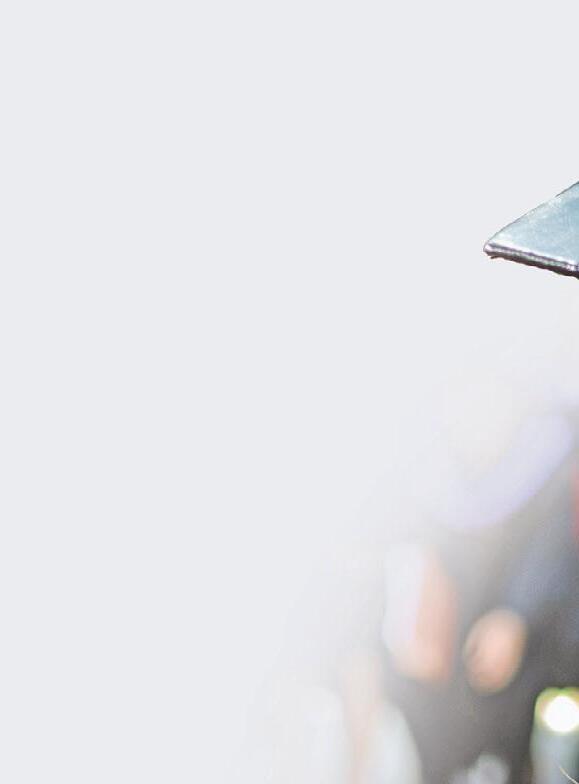

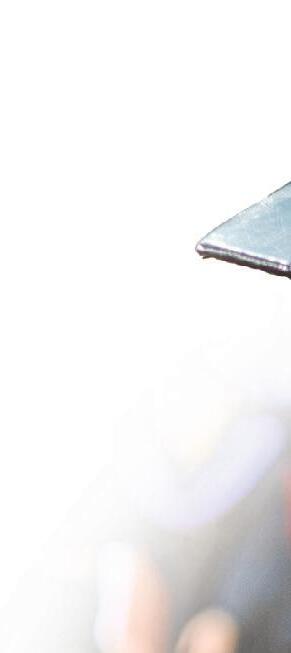








YOASH DVIR TECHNION AUSTRALIA
The Technion – Israel Institute of Technology has achieved a notable ranking in the number of US patents approved relative to the size of its research faculty. According to a recent report by the National Academy of Inventors (NAI), based on data from the United States Patent and Trademark Office (USPTO), the Technion ranked first in Europe and among the top 20 globally according to this metric.
This achievement highlights the ongoing role of Israeli institutions in technological innovation, a phenomenon that has led to Israel's nickname as the "Startup Nation".
The Technion, in Haifa, has long been considered a significant contributor to Israel's tech ecosystem.
The report indicates that the Technion had 48 patents approved in the US in the year leading up to the ranking. It is important to note that patent approvals often lag patent applications by several years, so these approvals may represent work from earlier periods.
One area where the Technion has made notable strides is in medical imaging. Researchers at the institution have developed methods to reduce MRI scan times and improve image quality using machine learning techniques. This

advancement is particularly relevant in the context of global healthcare, where efficient and accurate imaging is critical for diagnosis and treatment.
Another area of productivity is water purification, with the development of new methods for efficient water treatment, an area of particular interest, given global concerns about water scarcity.
Cybersecurity, a hot topic these days, is a further field in which Technion’s
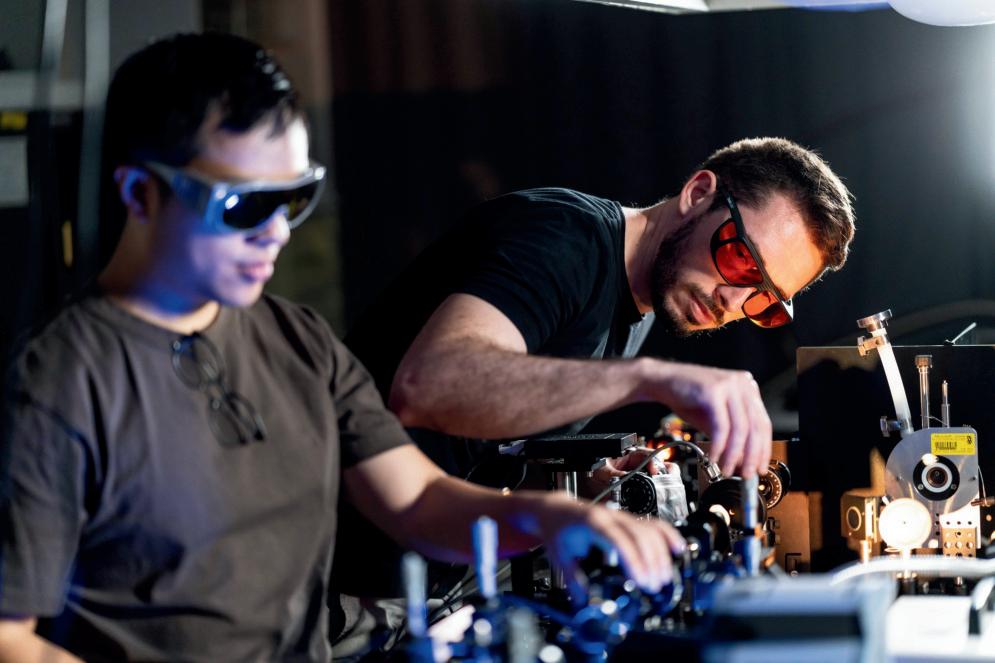
researchers made advancements, as they developed a novel approach to securing communication networks, reflecting the growing importance of digital security.
These areas of research align with global technological trends and challenges, suggesting that the Technion's work has potential for broad impact.
However, it's crucial to remember that patent approvals, while a useful metric,

do not necessarily translate directly to market success or societal impact.
The Technion's performance in patent approvals offers one perspective on Israel's innovation ecosystem.
Other factors contributing to Israel's tech sector include government policies, military technology transfer, international investment, and a culture that has been described as encouraging entrepreneurship and risk-taking.
Moreover, although small, Israel has three universities within the top 100 universities in the world, based on the Shanghai ranking, with Technion scoring 85th place this year.
While the ranking and patent approvals provide insights into the Technion's research activities, they represent only part of the complex landscape of technological innovation.
As technology continues to evolve rapidly, institutions like the Technion will likely play a crucial role in addressing global challenges and driving innovation. Of course, the challenge of commercialising these inventions remains and the measure of their success will ultimately be determined by the real-world impact of research and innovation.

For 100 years, Technion – Israel Institute of Technology has strengthened the State and people of Israel. No institution holds more promise for its future. It educates global entrepreneurs, develops pioneering technologies, expands our scientific frontiers and betters life



STEPHANIE HAUSMAN JDC (THE JOINT) AUSTRALIA
JDC (The Joint) is actively working to prepare and protect the residents of northern Israel, who are facing increasing threats from rocket and drone attacks. In a region where the sound of sirens and explosions has become a part of daily life, JDC's efforts are a lifeline for the most vulnerable communities.
In response to the escalating conflict, JDC has launched a comprehensive two-stage emergency preparedness plan. The first stage, focusing on providing nearly 150,000 of the most susceptible residents with personalised emergency kits tailored to their specific needs, is already underway. These kits are crucial for people with disabilities, families with young children and older adults, ensuring they have the necessary resources to protect themselves in the event of further attacks.
Should the conflict worsen, JDC is prepared to move into the second stage of its plan, which involves delivering direct aid to those in need. That includes providing essentials like food, hygiene supplies, medications and psychological assistance, as well as evacuation support. The organisation’s groundwork in the first stage will enable a swift and effective response to save lives.
JDC’s expertise in disaster response is also being leveraged to equip civilian

first-response teams in northern Israel. Hundreds of emergency medical kits, containing critical items such as ventilators and burn bandages have been distributed and there is a growing demand for more as the conflict continues.
The situation has taken a significant toll on children in the region, many of whom have been living under constant rocket fire for months. To address this, JDC is training early childhood caregivers to
cope with stress and trauma, expanding its Hibuki trauma treatment program, and preparing to support evacuee children and their families to temporary locations. These efforts are vital in helping children and their parents manage the anxiety and uncertainty that have become part of their daily lives.
Older adults, another highly vulnerable group, are also receiving critical support from JDC. With local social services overwhelmed, JDC has
AUSTRALIAN FRIENDS OF THE HEBREW UNIVERSITY
Student protests and encampments over the war in Gaza have challenged universities in the diaspora. For the Hebrew University of Jerusalem, however, the difficulties have been different, and of a greater magnitude. “It’s more complicated than in the States because we live the complexity; we see what’s going on in some way,” said Professor Mona Khoury, the university’s vicepresident for strategy and diversity, and a professor in the School of Social Work. Professor Khoury, a former Fulbright postdoctoral fellow at the University of Chicago, has herself contributed to Hebrew U’s diversity: she was the first Arab woman to be appointed dean of faculty at an Israeli university, when she took up School of Social Work role in 2018. She also received the President of Israel’s Medal of Honour in recognition of her contribution to the country.
Professor Khoury visited Australia in 2019 to participate in a series of events highlighting women that have ‘shattered the glass ceiling’.
As an academic institution, the Hebrew University was uniquely placed to respond to the war. It invited its own experts, especially those who work on trauma, onto Zoom after 7 October to talk with students and with faculty and
mobilised community caseworkers to reach out to isolated seniors and people with disabilities, providing them with emotional support and connecting them to essential community resources.
JDC has established pop-up day centres for the elderly, offering a range of activities and support services to prevent physical, emotional and cognitive decline. As the situation in the north becomes more precarious, JDC plans to expand these centres to accommodate the growing number of elderly evacuees.
To ensure that essential services remain operational in the north, JDC is also supporting the Ministry of Economy’s National Employment Coordination Center by readying a database of 2,000 emergency workers who can be deployed to critical industries like food production, healthcare and transportation. This initiative is crucial for maintaining the stability of the region’s infrastructure during times of crisis.
JDC’s commitment to strengthening and revitalising Israel’s northern communities is clear. Its efforts to prepare, protect and support the region's most vulnerable populations are vital as the threat of escalation looms. In these challenging times, JDC’s work is not only providing immediate relief but also laying the groundwork for long-term recovery and resilience.

administrative staff about the anxiety of what had happened and what was unfolding.
In the Hamas attacks, sons, daughters and parents of teaching staff and postgraduate students were murdered and taken hostage. Among Palestinians killed in the ongoing war are relatives and friends of students and faculty members. In addition, 5,000 students were recruited to the IDF, some of whom have been
killed in active service. Professor Khoury and her colleagues already had a crisis management plan: one prepared during the May 2021 Israel/Palestinian crisis, which detailed the steps the institution needed to take in a time of conflict. She had then just been appointed to the diversity role.
Much of the content of that document has been applied post October 7. Workshops and arts activities are among
the tools used to encourage students to talk to each other and as a way of increasing inclusion.
A project that has had particularly positive results is one in which students from different backgrounds undertake assignments with each other, with a view to changing attitudes, ideas and perspectives. Away from their studies, students are offered access to interfaith groups, music and theatre ensembles.
Ahead of collaboration, student diversity must start with bringing in different groups. In recent years the university has increased the number of Arab students from 12 percent a few years ago to 21 percent of current firstyear students.
The university has not had student encampments or violence on campus, Professor Khoury said.
“This doesn’t mean that people don’t feel bad or feel that tension. It’s not a normal situation, so you can’t ignore it, and we have a lot of anger about what’s going on with the hostages.”
Still, as she looks at how the university has managed, Professor Khoury is optimistic. “I’m not saying we are perfect, but I wish that in some way our country will act as we act … as we try to give opportunity for everyone, as we try to be inclusive and be diverse.”
During my recent trip to Israel with the Rabbinical Council of Victoria, I had the honour of volunteering to tie tzitzit for IDF soldiers. This task, undertaken in a modest hall in the heart of Jerusalem, deeply resonated with me, forging a personal connection to the courageous men and women defending our people.
In the wake of the tragic events of October 7, when Israel faced a devastating attack, the IDF urgently called up 360,000 reservists. It was the largest mobilisation since the 1973 Yom Kippur War. This rapid response left many reservists in need of essential gear, both practical and spiritual. Among the most requested items was tzitzit, sought after by soldiers of all backgrounds, religious and secular.
Tzitzit, the knotted fringes attached to the corners of a four-cornered garment, hold significant spiritual meaning in Judaism. This mitzvah is unique, representing the 613 commandments of the Torah. The word "tzitzit" itself has a numerical value of 600, and when you add the eight strands and five knots, it equals 613. The garment is more than a ritual object; it serves as a constant reminder

of one’s connection to the Divine. In times of conflict, the meaning of tzitzit goes beyond spiritual symbolism. Jewish tradition teaches that tzitzit provide protection from harm. The Zohar, a key text of Jewish mysticism, describes tzitzit as a shield against destructive forces.
The Gaon of Vilna, a revered 18thcentury scholar, also highlighted that by wearing tzitzit, many enemies would fall. These teachings have
inspired countless stories of miraculous protection throughout Jewish history, stories that continue to inspire us today.
One such story that stood out to me involves Major General (Retired) Noam Tibon, who bravely returned to the battlefield on October 7. He shared how, when he joined a group of IDF soldiers to assist them, he didn’t have a uniform to identify himself as an IDF soldier.
None of the soldiers had a spare shirt, but a young soldier offered him a pair of tzitzit, which he gratefully accepted.
Though not religious, the general wore the tzitzit over his clothing as he entered the battlefield. He later credited the tzitzit with providing the protection that allowed him and his comrades to save many lives that day.
As we gathered to tie tzitzit, the significance of our work was palpable. People from all walks of life – religious and secular, young and old – came together with a shared mission: to offer both spiritual and physical support to those on the front lines.
The Military Rabbinate requested more than 60,000 pairs of tzitzit and the community’s response was extraordinary. People from seminaries, yeshivot, solidarity groups and other sectors stepped up to fulfil this mitzvah,
A
A group of 26 rabbis and rebbetzins went to Israel to provide strength and inspiration. Instead, we were the ones strengthened and inspired. The spirit of the Jewish people is gloriously manifested in Israel. The IDF soldiers and civilians we met are modern day heroes who stay strong in defending the Jewish people's inalienable right to our indigenous homeland.
Much of our mission focused on the aftermath of October 7, as we visited communities in Israel’s south devastated by the barbaric attacks of the Hamas terrorists. But there were also more positive experiences, such as our visit to a tiny shule whose volunteers have been producing tzitzit (woollen tassels worn by Jewish males) for IDF soldiers.
Both rabbis and rebbetzins worked hard to knot together more than a dozen new pairs of tzitzit, which were delivered to the soldiers a couple of days later.
We had the opportunity to have dinner with former Israeli government spokesman Eylon Levy. Given I was sitting next to him, I had the opportunity
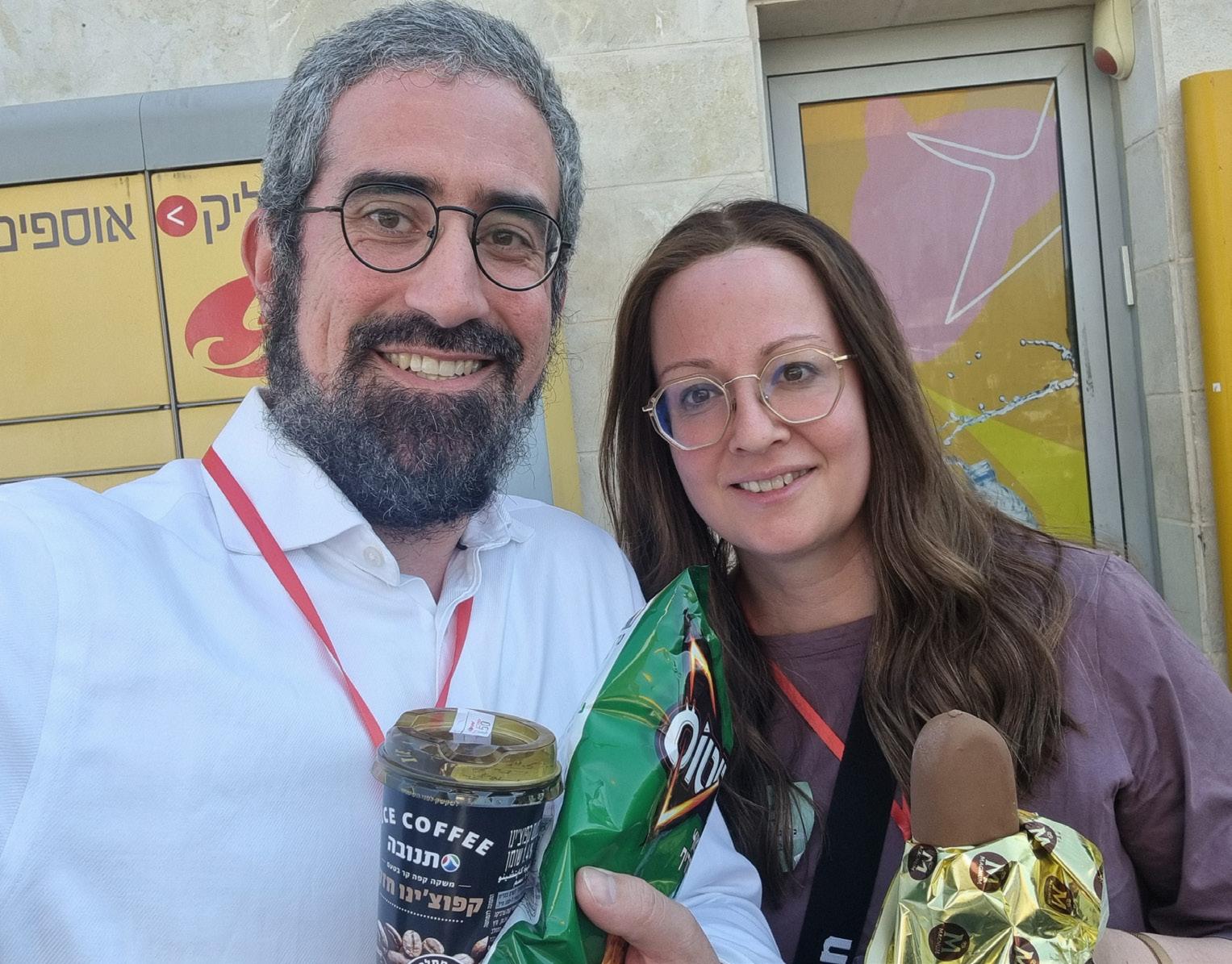
to hear directly about his journey from government spokesperson to co-founder of the Israeli Citizens Spokespersons' office.
We also visited the Tel HaShomer Hospital to hear stories from injured soldiers. One of the soldiers, Kfir, was severely burned when Hamas hit his tank with rocket propelled grenades.
After his talk, I told him about a special prayer for the IDF, which our
ensuring that thousands of soldiers would receive their tzitzit in time.
An intriguing detail shared by an IDF rabbi concerns the colour of the tzitzit strings for soldiers. While one might think green strings would be more suitable for combat, the IDF Rabbinate decided to keep the strings white.
This choice is not only steeped in tradition, but also has a practical function: white tzitzit serve as a reminder to soldiers to tuck them in, preventing them from getting stuck on something during combat.
This special experience reaffirmed the deep bond between the Jewish people and our faith, even in the most trying of circumstances. The tzitzit we tied were not just pieces of cloth; they symbolised hope, unity and divine protection.
Reflecting on this mitzvah, I was reminded of the enduring resilience and strength that have sustained the Jewish people throughout millennia.
As we continue to stand by our brothers and sisters in Israel, let us never forget the power of these simple fringes.
May the merit of tzitzit protect our soldiers and bring us closer to a future of peace and security for the Land of Israel.
shule choir sang and sent him a video of our choir singing that prayer.
He was moved and said he wants to listen and watch it over and over because of how beautiful it is.
We then met with former Chief Rabbi of Israel, Meir Lau. Rabbi Lau was the youngest survivor of the Buchenwald concentration camps.
I told him that my grandfather, Mendel Glick, was also a survivor of
Buchenwald and he asked me about the other survivors in Melbourne. He is an inspirational spiritual leader and I was honoured to have met him earlier here in Australia.
We later travelled to Hostage Square in Tel Aviv to meet with the Avigdori family, who shared their experiences of family members, some of whom were killed, some taken hostage and returned, and one nephew who is still being held captive in Gaza. It was very hard to hear but we were all so inspired by their strength.
On a more spiritual note, our group also went to visit Rachel's Tomb in Bethlehem ("Beit Lachem"), where we had time for prayer and reflection.
To be able to pray at the holy site of the grave of our matriarch Rachel was a particularly moving moment for the rebbetzin.
Her life and love have inspired many rebbetzins in the important communal work they do.
For me, the most powerful (and tragic) part of our mission was hearing first-hand accounts from soldiers whose job it was to identify body parts of their fallen comrades, along with civilians, after the October 7 slaughter. It was gut wrenching and gave me a much deeper appreciation for the sacrifices made by the IDF, their families and, of course, the entire Israeli people.
RABBI GABI KALTMANN RABBINIC
As we approach the High Holidays, this year’s reflections feel particularly poignant. In the Diaspora, we often need reminders to truly connect with the spirit of these solemn times. We try to imagine what it was like for our ancestors during their darkest hours. We remind ourselves of the struggles and suffering that shaped Jewish history.
But this year, tragically, the current world environment makes it all too easy to connect with that sense of mourning. The Jewish people have been in a state of grief, contemplating the toll that recent events have taken on our community. We’re witnessing a resurgence of antisemitism globally, something we had hoped was a thing of the past.
When we think of the suffering, the loss and the devastation in parts of the world today, it’s hard not to feel a deep connection to our history. The images we see, the stories we hear are all too real, too close to what our people have endured in the past.
Despite the progress we've made, with a strong and vibrant Jewish community,
a sovereign Israel and the security of living in a blessed country like Australia, the weight of the current global situation still weighs heavily on our hearts. The stress of ongoing threats, the pleas of families for the safe return of their loved ones and the widespread displacement of people are ongoing reminders that our challenges are far from over.
Even closer to home, we feel the strain in our own communities. We notice when friends and neighbours don’t support us as we had hoped. We hesitate before outwardly displaying our Jewish identity, wondering if it’s safe.
But even in the midst of this hardship, our tradition offers a message of hope. The ultimate message is one of renewal and return. Just as the Jewish people have always found their way back to their land and their faith, so too will we find our way through these challenging times. Our history is a testament to resilience and hope. Life will get better. We must believe it will.
Let’s carry this message with us. In the thick of adversity, it can be hard to see the light, but our faith demands that we hold on to hope. Better times will come. I truly believe they will.
Question
What does the word Zion mean? As far as I know from reading the Bible, Zion can mean the Land of Israel, the people of Israel, or the city of Jerusalem. But what does it actually mean?
Answer
When I lived in Jerusalem, I used to take my shirts to be pressed at Itzik’s laundromat. He did a great job and was very fast. They said about Itzik that he would iron like a lion in Zion.
So, what does Zion mean? The literal translation is “sign” – a symbol, a demarcation, an object that represents something else.
Zion is the Jewish people. We are a sign. Understand that and you’ll understand our secret. You’ll also understand those who love us and those who hate us.
A sign is not there for itself. A sign has a message to convey about something else. If you see a sign on a highway with a picture of a kangaroo on it, it’s not there for decoration. It’s there to warn you to look out for wildlife on the road. If a house has a “for sale” sign out the front, the sign is not for sale, the house is. If you come across a sign with an arrow pointing right, simply look right. The purpose of a sign is to draw attention not to itself, but to something beyond itself. The Jewish people are a sign pointing upwards. Everything about us points to a higher power. You can’t explain

Jews without G-d and you can’t understand Israel without faith. In every chapter of our history, until today, you see an unmistakably divine fingerprint. Somehow our little nation always ends up at the centre of world events. Somehow our tiny piece of land is the focus of all the nations of the world. And somehow whatever happens to Jews anywhere has an impact on Jews everywhere.
That’s because our story is not about us, it’s about something higher. Every Jew on the face of the Earth is a walking sign of the One above. We are here to bring a message, not by preaching, but merely by existing as Jews.
This is why people love us. And this is why people hate us. A Jew is not just a Jew. A Jew is a symbol of G-d, the G-d who took us out of Egypt, gave us the Torah and brought us to the Promised Land. Those who love the G-d of the Bible love the Jews. Those who hate that G-d, hate the Jews. They may say they only oppose Zionists, but we know what they mean. They can’t stand seeing the sign that points clearly to G-d, who gave us the Torah and the land of Israel.
It’s not always easy to be a sign of the One above, but there can be no greater gift. We have infinity in our soul, we have G-d on our side and we have good people the world over who believe in us. We stand strong and proud, doing our job as Itzik did – iron like a lion in Zion.
Rabbi Aron Moss is the director of the Nefesh Centre in Bondi Beach. For more information, go to www.nefesh.org.au

RABBI DR BENJI LEVY
If you went on Amazon right now and typed in ‘happiness + books’, you would get roughly 80,000 results – all books trying to teach you the secret to happiness. That’s a lot of secrets.
So, what if we just start with just three? Let me explain.
Rabbi Jonathan Sacks highlighted the following paths to happiness:
• Inner peace
• Covenantal community
• Sacrificing for a cause
Inner peace
True happiness comes from finding peace and serenity from within yourself. I learnt this from Holocaust survivor Eddie Jaku who called himself the happiest man on earth. When asked how he could be so happy after surviving Auschwitz he told me that his secret was his capacity to find peace. He was able to let go of negativity and open himself up to the beauty of the world and discover the inner peace that led to happiness.
Covenantal community
Every Friday night, I close my eyes and smile when I sing a verse in the Lecha Dodi prayer, “your God shall rejoice over you, as a bridegroom rejoices
over his bride”. At that moment, I think about the most important covenantal partnership of my life – my marriage to my wife, Renana: a partnership that has enabled us to build a Jewish family and covenantal community.
Being a part of a partnership and community built around a shared covenant of faith and identity gives one a sense of belonging and peace that leads to happiness. Think of the last time you felt part of a community or spent time with those close to you. Did you not feel true joy?
Sacrificing for a cause
How can we derive joy from sacrifice? Think about the last time you sacrificed something for a cause you believed in. Didn’t you feel a deep sense of fulfilment, joy and happiness?
Abraham’s life was ridden with hardships. Despite that, we’re told that he lived a wholesome life and ultimately found true joy. More recently, the earliest Zionist pioneers sacrificed to turn what was uninhabitable land under onerous conditions into the future of the Jewish state, yielding the ultimate joy in seeing the state of Israel born and growing. So, why not forget about all the ‘secrets’ and access one of these three significant pathways?
The Rabbinical Council of Victoria (RCV) recently completed a solidarity mission to Israel, a journey that profoundly touched the hearts and souls of the 25 rabbis and rebbetzins that participated.
RCV president Rabbi Moshe Kahn said: “The mission was a powerful testament to our unwavering solidarity with Israel. From the moment we arrived, we were enveloped in the resilient spirit of the Israeli people. It was an experience that will forever resonate within us. The stories of courage and resilience we encountered have deeply moved us, reinforcing our commitment to Israel and our respective local communities. We return home inspired and determined to lead with renewed passion.”
Their journey was filled with moments that inspired and humbled them. They had the opportunity to spend time with IDF soldiers, they listened to their personal stories of struggle and triumph, and witnessed their sacrifices and dedication. These brave men and women shared their experiences with an honesty and vulnerability that left an indelible mark.
They also engaged in high-level discussions with members of the Knesset, gaining valuable insights into the political landscape and the ongoing challenges faced by Israel. They met leading local rabbis, whose wisdom and guidance provided them with a deeper understanding of their faith and their shared mission. The mission also brought them face to face with the devastating
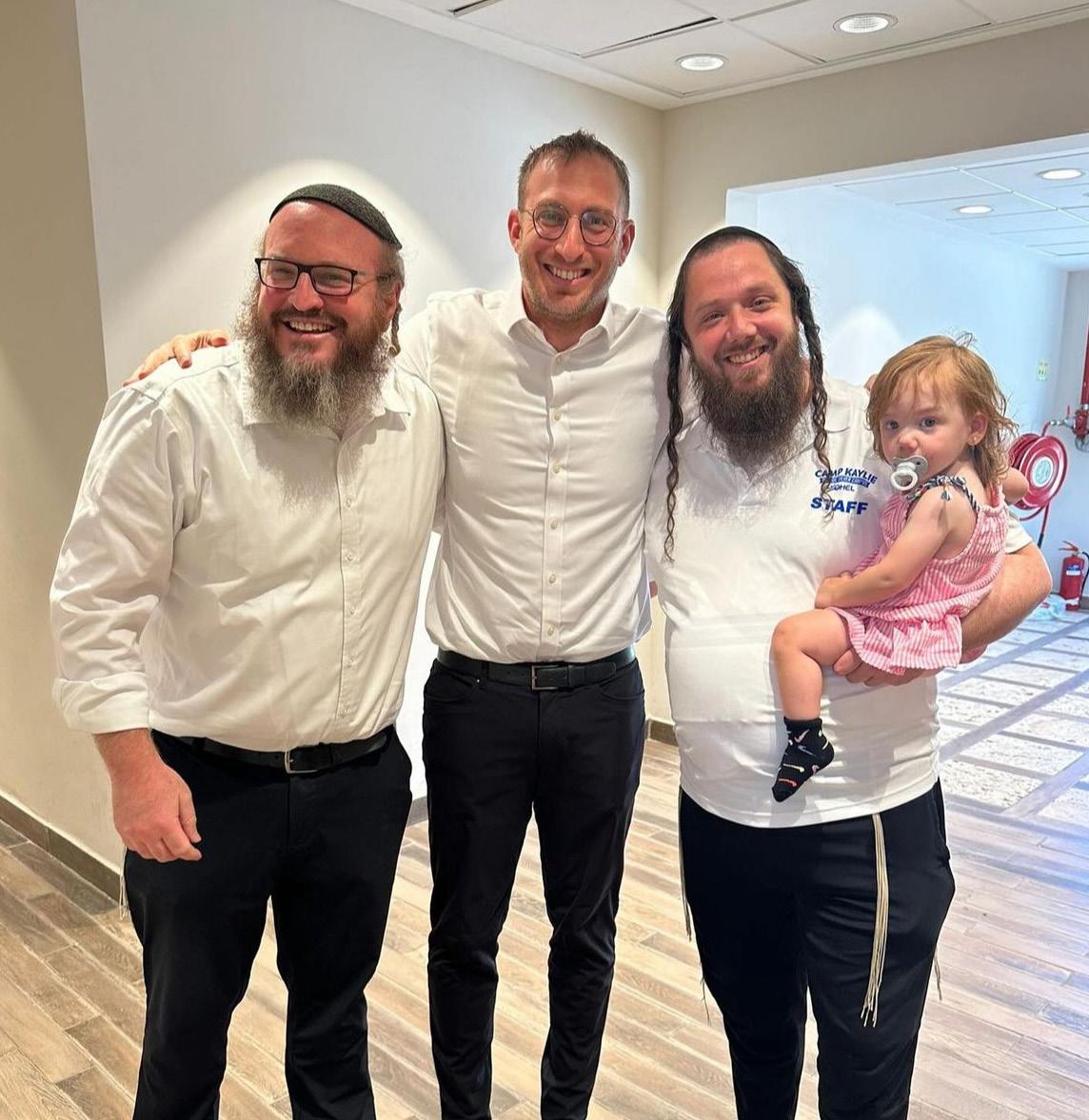

effects of October 7. They visited areas that had been ravaged by Hamas terrorists and witnessed the destruction and the pain left behind. These moments were sobering reminders of the immense challenges that Israel continues to face and strengthened their resolve to support their family in Israel with unwavering love and commitment.
The RCV ran a Tzedakah campaign drive across 19 communities. Funds raised went directly to those in need, providing much-needed support and demonstrating solidarity with their brothers and sisters in Israel. The generous
donations supported widows and the bereaved children of the war, along with the families of the hostages.
A special breakfast was hosted at Tel Hashomer Hospital for the wounded soldiers, and gifts were also distributed to those soldiers recovering in the rehabilitation unit. Mission participants also celebrated and danced with soldiers serving on the front lines during a barbecue, sharing moments of unity. Further funds were given to support the communities in the south and north affected by the war. RCV executive director and mission organiser Rachel
Mihalovich said: "It was truly inspiring to witness the camaraderie of Melbourne's rabbis and rebbetzins as they shared moments of sadness, joy and hope with the people of Israel.
The strength of spirit displayed by every Israeli we met was palpable. Clearly this mission has deepened each participant's resolve to promote a strong unity within the Melbourne Jewish community and unwavering support for Israel."
They continue to pray for the safety of the soldiers, the return of the hostages and for peace in the world.
As Jewish students return to campus amidst a climate of uncertainty, The Australasian Union of Jewish Students (AUJS) remains steadfast in its commitment to providing its members with services and programs to help them better navigate the rapidly changing environment that has characterised the aftermath of October 7.
After spending much of the previous semester extinguishing fires, AUJS kicked off this semester with a more proactive and hands-on approach by increasing its budget for on-campus initiatives and placing a heightened focus on advocacy training, community engagement and creating safe spaces where students can connect with peers, explore shared interests and take pride in their identity.
In an effort to adapt to the new challenges faced by Jewish students and the Jewish community at large, AUJS will also be expanding some of its existing programs to better adapt to the new reality knocking at our doorstep. These include Jewish Engagement Week (JEW), which will run between August 26-30 and regional Accelerate conferences, that will take place throughout September and October.

JEW is designed to celebrate the rich and diverse culture of the Jewish people. This year’s program aims to educate both Jewish and non-Jewish communities about the varied history and traditions of the Jewish people and the Jewish State. Considering widespread misinformation that has been propagated since October 7, JEW will emphasise that Israel is not a European colonialist project but a vibrant, multicultural society with deep historical roots in the Middle East. The initiative will be showcased through an online campaign and a series of events
Method:
Cream sugars, margarine and vanilla essence in mixer.
Add eggs and beat until light and fluffy.
Add combined dry ingredients and mix well.
Stir in chocolate chips. Form into balls.
Place on baking sheets, lined with baking paper.
Bake at 180 degrees Celsius for 10 minutes. Enjoy!

held on campuses around Australia. Accelerate is another key program designed to deepen AUJS members' understanding of Israel and its multifaceted challenges. While previous conferences have had the IsraeliPalestinian conflict as a primary focus, this year’s events will offer a broader perspective on various aspects of Israeli society. Participants will delve into the societal, religious, ideological and political tensions within Israel and how these factors have influenced the country's response to October 7.
This year, Accelerate will also seek to engage a wider audience by being conducted in different formats across all AUJS regions. Unlike past conferences, which were typically held in one state –usually Victoria or NSW – this approach looks to reach hundreds of students across multiple locations, thereby increasing accessibility and impact.
The unifying theme of both JEW and Accelerate this year is the recognition that effective Israel advocacy begins with a nuanced understanding of the diversity within the Jewish world and Israeli society. By fostering this understanding, AUJS aims to empower students to advocate more effectively and confidently for their community.
As we approach the first anniversary of October 7, it is crucial to reflect on the significance and introspection that this day can offer. For young Jewish students, this reflection starts with a deeper comprehension of Israeli reality and building a sense of confidence and pride in their religion and culture. These initiatives are designed to support this journey and equip students with the knowledge and tools needed to navigate and advocate within today’s complex landscape.
TCHOTCHKES. Here is a list of some common words (“yes”, we know there are more words in the dictionary that can work, but these words are the most common): TCHOTCHKE, SKETCHES, SOCKETS, CHECKS, CHEEKS, CHOKES, SKETCH, SKEETS, SOCKET, SHACKS, STOKES, STOCKS, CHECK, CHEEK, CHOKE, COOKS, HOCKS, HOOKS, KOOKS, SOCKS, SEEKS, SHOCK, SHOOK, STOCK, STOKE and TOKES.
Questions/comments, please email Yoni at koshercrosswords@gmail.com
YEHUDIS LITVAK COURTESY: AISH.COM
After October 7th, Nissim Black’s music became a unifying force.
American/Israeli rapper Nissim Black grew up in the inner city of Seattle, WA. Musically gifted, he began composing and producing music as a teenager. As an adult, he embarked on a spiritual quest, which led to his conversion to Judaism. Today, Nissim lives in Israel with his family, and his Jewish-themed music inspires diverse audiences world-wide.
Last autumn, Nissim had been working on his fourth album, with plans to release it in November. He had just released the second single from the album.
“Then October 7th happened,” says Nissim. “I couldn’t even look at music. I couldn’t do anything.”
He put the album on hold and threw himself into what he felt was more needed at that moment – to “bring a voice of some type of hope, reassure people, to remember that God is on our side. I got creative, just not musically creative. I went on social media and started releasing videos, telling everybody that it is very important when dealing with terrorists not to allow them to cause terror. Don’t watch the videos, don’t be obsessed with the news. What we do in our times of struggle is we turn to God and prayer. This is our ray of hope.”
Diverse audience
Despite the global rise in antisemitism, Nissim continues to perform all over the world, though now he travels with an armed bodyguard. Recently, Nissim performed in the United States, Canada, South Africa, Great Britain, Gibraltar, Germany, Brazil and Jamaica.
His audience is diverse and not limited to Jews. In fact, many of his listeners are religious Christians. Nissim says, “It’s been very interesting to see, as it appears that more and more people are turning their back on Israel, that there is this overwhelming support, particularly from the Evangelical world.” Since October 7th, his Christian fan base has been consistently growing.
“Maybe because I’m here, in Israel, and I speak a language they’re familiar with. I don’t think my music is converting anybody, but people who are already pro-Israel are attracted to my music.”
Nissim finds it easy to connect with religious people – whether white or black, Jewish, Christian or Muslim. When he noticed that his post-October 7th inspirational videos were attracting nonJewish viewers, he made sure to use English terms rather than Hebrew and include “universal items of faith”.
“I was Muslim as a kid, but I wasn’t raised Muslim,” he says. “My grandfather introduced me to Islam when I was eight years old, but my parents weren’t religious. Later, I converted to Christianity. So, any religion I’ve participated in, from the three Abrahamic religions, I was a convert to. I was never raised in a religion. Because of that, I don’t have any resentment towards any religion. I wasn’t forced to go to church, or mosque, or synagogue. Every move

towards God and spirituality I made on my own. So, I have a certain level of tolerance that many people wouldn’t have. I want to see everybody close to God.”
Both Nissim’s music and words of inspiration have been received very positively. “I’ve been getting a lot of love,” he says. “That’s been awesome. I tour a lot – 100 days of the year I’m on the road. So, I also get to see the effect my music has had on so many different people. People have been able to stop listening to music that’s not good for them. I get messages from people and run into people all the time who are somewhere in the conversion process. It’s wild.”
Encounters with antisemitism post October 7th
In his travels, Nissim has also encountered a lot of antisemitism, especially after October 7th. “I’ve experienced a lot more antisemitism than I have racism.”
Though racism obviously exists, Nissim had not seen much of it growing up. There was systemic racism, such as lack of proper textbooks in his predominantly black high school in Seattle, but no blatant racism on a personal level.
After he converted to Judaism, Nissim experienced some racism within the Jewish community, though not on a large scale. “But on the flip side, there is so much love and acceptance that I have as a Jew that I never before experienced in my life.” Even without a large extended Jewish family, Nissim feels very much at home in the Jewish
and start eating potato latkes and jam. I talked to some of them afterwards. It was a very awesome experience, the exact opposite of what everybody was bracing themselves for.”
Nissim was hosted by the DEI departments of other universities and was surprised to find the experiences very positive.
After postponing the release several times, Nissim and his team finally decided to release the new album on August 14th. The album, Glory, contains 17 songs, accompanied by beautiful footage filmed in Norway and Israel.
He says, “When I stopped making music and was just holding on to the album, a lot of people messaged me, saying, ‘Now we need music more than ever!’ Music can be healing. If you play the right song at the right time, it can really heal a person. We underestimate the power of music.
It sets the mood. Everyone has a soundtrack to life – the songs that bring them back to their place. Music is a very powerful tool. The prophets, especially Elisha, would achieve their prophecy through music.”
Nissim compares his creative process to a journey. “First, it’s the prayers,” he says. “I try to stick to an hour of alone time with Hashem every day. Usually, that’s my inspiration. I come back, and I start writing.
community. Antisemitism, on the other hand, has been a lot more pervasive. “I walk down the street and everybody has got something to say,” Nissim shares. “And online – oh my goodness, how much antisemitism I get online! Very nasty and disturbing messages. Especially in the socio-political climate we’re in today, where if any of those people said any of those things to me because I’m black, it would be totally intolerable, but since I’m Jewish, they can say anything and nobody cares. I find it quite interesting.”
Nissim has been called a traitor, accused of joining “a white religion”, and criticised for not expressing support for the Palestinians, who are considered people of colour.
“People are not thinking this through as they’re saying this stuff. Every once in a while, if I have an opportunity to educate, I will.”
Despite the darkness since October 7th, Nissim has found that his performances are able to bring some light, even to hotspots of antisemitism, like college campuses.
During Chanukah, Nissim performed at the menorah lighting at George Washington University. The organisers were understandably concerned about security and took extra security measures. They lit the menorah at the exact spot where the pro-Palestinian event took place just days earlier.
Nissim recalls, “The head of the DEI office came out and was so impressed! And then these black kids come out
The music always comes first, then I start thinking visuals, I start thinking of what this song is saying to me. Then, before I get to the lyrics, I write cadence. I always think that the most impactful thing is not what you say, but how you say it.
Once music and cadence are there, it’s very easy to fill in the words, because I already know how I’m going to say what I’m going to say.”
Nissim has profound appreciation of his fans. Thanks to social media, he has been able to build relationships with his fans and form a community. He treasures all the feedback he receives.
“People underestimate how much it means when people take the time to let you know how much you’ve been able to affect them. It gives me so much strength to go on.
You need that feedback, that constant love, you need people commenting on all the YouTube videos – all of that, because it gives you fuel for the fire and enables you to produce and do more.
Everything that I have is all them.”
“The world is getting very loud and the louder it is, the harder it is to hear the voice of God. In everything that is going on right now, God is calling all of us to come closer to Him, to get to know Him. And this is the time to really ramp it up and be more focused, but it’s really the hardest time to do it.
Israel is trending in the media. Let’s make the focus on the things that we really should be trending for, which is revealing the light of God in the world.”










ALEXANDRIA FANJOY
Whether it's vandalising her image or claiming her as a Hamas supporter, the inversion of Holocaust history is profound and grotesque.
“In spite of everything, I still believe that people are really good at heart. I simply can’t build up my hopes on a foundation consisting of confusion, misery and death. I see the world gradually being turned into a wilderness, I hear the ever approaching thunder, which will destroy us too. I can feel the sufferings of millions and yet, if I look up into the heavens, I think that it will all come right, that this cruelty too will end, and that peace and tranquillity will return again.”
– Anne Frank
Anne Frank is perhaps the most famous civilian killed in the Second World War. Her family fled Germany, established a jam-making business in Amsterdam, and were hidden by a small number of their employees until the summer of 1944. They were betrayed (we still do not know by whom), deported to Westerbork and then Auschwitz, where the girls survived selection and a death march, but both died in Bergen-Belsen. By the end of the war, only Otto Frank was alive. When he returned and was given her diary, rescued by Miep Gies, he ended up publishing it. Anne Frank became, rather quickly, a symbol of the innocence and the injustice of what happened to her.
But perhaps she became so famous because of what she wasn’t, rather than what she was. Yes, she was Jewish and yes she was killed. But her diary doesn’t speak of anger or revenge; it speaks of her unfailing belief in the goodness of people. And thus the act of reading it became a salve on the souls of people who were not looking to confront their own morality. If she, this young girl, was able to look at the

world and identify this experience as one of temporary evil and madness instead of a systemic human condition, then people the world over can feel the absolution she seems to grant through its pages: you too, are fundamentally “good at heart”.
But the symbol of Anne Frank has become a problematic one in recent years. Some years ago, a man who worked at the Anne Frank House in Amsterdam was asked to not wear his kippa while working, as it was a religious garment that could be seen as “political”. In effect, he was asked to hide his Judaism, while working at the Anne Frank House.
In the weeks after the outbreak of war, a daycare centre named for her in Germany proposed changing its name as “migrant parents of the children at the school wanted

the name changed, as Anne Frank did not mean anything to them”.
In Amsterdam a few weeks ago, a blood-red “Gaza” was painted on her statue. And in Norway, graffiti of her wearing a keffiyeh sparked outrage.
Why does Anne Frank engender so much emotion? Instead of a symbol of a victim of genocide, she has become associated with genocide.
Instead of someone who is being killed for being Jewish, she is dressed in the political symbol of a group that has made no bones about a desire to kill Jews. It’s this association with innocence that seems to generate such vitriol and also demonstrates the profound inversion of Holocaust history in how today’s events are understood.
Using Anne Frank as a passive symbol to express anger at bloodshed (which, while horrifying, is not genocide) is as problematic as her being a target of antisemitism once more.
The artist who created the image of her in a keffiyeh defends her position, saying that having read the book, she knows Anne Frank would have agreed with her.
What, that Anne Frank would have believed that the Hamasniks who broke in on October 7th too were “good at heart” and that we should all collectively see our genocidal enemies with equanimity and absolution? We will never know what Anne Frank would have lived to say about the Nazis, because she was killed by genocidal maniacs in the waning days of a war that they had already lost.
And for those who vandalise her statue and the other memorials of
the Holocaust around Europe, was it not enough to kill her once? Ones who say that they do so because of the actions of Jews are perhaps not as well versed in history as they should be – remember, the Nazis, too, justified the mass murder and the Holocaust as a result of “Jewish power”.
But the continual focus on Holocaust inversion betrays something deeply antisemitic about reactions to this conflict, and something that no doubt Adolf Hitler would be thrilled about (while hopefully burning in hell). If you vandalise Holocaust memorials in the name of a war begun by Hamas, you are providing Hitler a posthumous victory.
The same perceptions of Jewish power, the same justification of violence gave rise to a force that killed her once; when you target her and smear her memory as part of the callous attacks on Jews for a complicated war being fought thousands of kilometres away, you’re just providing her with a posthumous death.
Dr Alexandria Fanjoy Silver has a B.A. from Queen's University, an MA/ MA from Brandeis and a PhD from the University of Toronto (all in history and education). She lives in Toronto with her husband and three children, and works as a Jewish history teacher. She writes about Jewish food history on Substack @bitesizedhistory and talks about Israeli history on Insta@ afanjoysilver.
SIX sizzles and girl power rules.
It is a high-octane musical in every sense of those words. I speak of talent, production values, choreography, sound and lighting – the complete package.
The concept is pitting the wives of King Henry VIII against each other in a show of strength about who was the most hard done by.
Of course, that includes the pair that was beheaded and the duo that divorced.
The story unfolds through song and what bangers they are, with stirring and defiant lyrics and attitude to boot, interspersed with a couple of more soulful numbers.
Each of the sextet metaphorically sings her lungs out and, accordingly, has her time to shine. Truth be told, they don’t just shine.
They dazzle and delight, individually and collectively.
They have excellent stage craft – deft dance moves and a mean set of pipes. They harmonise magnificently and boy, can they diss … and how.
The audience laps up every delicious morsel of their tales of woe and neglect.
The enthusiastic sextet is supported by a power packed all-girl band, known as Ladies in Waiting. Musical director Claire Healy is on keys, Kathryn Stammers on drums, Danielle Colligan guitar and Ann Metry bass.
Sensitive and affecting, Touch is a love story that spans the ages.
The two in play here meet at a Japanese restaurant in the UK.
On principle, Icelander Kristofer gives up his place at the prestigious London School of Economics to work as a dishwasher at the busy eatery.
That is where he first sets eyes upon the restaurant owner’s daughter, Miko, also a student, who works there part time.
She and her father emigrated to London from Hiroshima in 1957.
Their past lives form an important part of the back story.
The connection between Kristofer and Miko is palpable. He is shy and cares deeply. She goes after what she wants.
Theirs is a clandestine relationship, but circumstances tear them apart and they are not to meet again for more than half a century. By then, Kristofer’s cards are marked and he is told to pursue any unfinished business before it is too late.
The COVID outbreak is in its infancy. Masks and distancing are beginning to be a part of everyday life. Citizens are being urged to return home.
Nevertheless, the now elderly man closes his restaurant in Iceland and takes a flight to try to find his lost love.
Told through flashbacks, Touch is a heart-wrenching story, both dramatic

The choreography by Carrie-Anne Ingrouille is intoxicating, as the show comes together seamlessly.
I am in awe of the integrated set, lighting and sound design (by Emma Bailey, Tim Deiling and Paul Gatehouse respectively). What a spectacle!
The piece de resistance is the vibrant superhero costuming by Gabriella Slade.
The subject may be heavy, but its treatment is not. It is built around great music, irreverence, laughs and sass.
Each “wife” is attributed musical icons as “Queenspiration”.
Married to Henry for 24 years, Catherine of Aragon (Kimberley Hodgson) pays
a nod to Beyonce and Shakira. Fluent in French, Anne Boleyn (Deidre Khoo) channels Lily Allen and Avril Lavigne.
Jane Seymour (Loren Hunter), who claims she was the only wife Henry really loved, gives Adele and Sia a run for their money.
German-born Anna of Cleves (Zelia Rose Kitoko) doffs her cap to Nicki Minaj and Rihanna.
Its Ariane Grande and Britney Spears for Katherine Howard (Chelsea Dawson), who lost her head for her promiscuity.
Catherine Parr (Giorgia Kennedy) was the only “survivor”. She draws inspiration from Alicia Keys and Emeli Sande.
With book, lyrics and music by Toby Marlow and Lucy Moss, SIX began as a student production in a 100-seat venue in 2017. Little did they know at the time that it was bound for glory.
It has gone on to claim 23 gongs, including the 2022 Tony Awards for Best Original Score (Music and Lyrics) and Best Costume Design.
SIX sparks and sparkles. It is great musical entertainment, a showcase of power and punch.
Eighty minutes without interval, it is playing at the Comedy Theatre until 20th October, 2024.

and romantic. It has been beautifully composed and executed by writer and director Baltasar Kormakur (Beast), alongside fellow writer and author Olafur Johann Olafsson.
It is a welcome change of pace for Kormakur, best known in the US for his bigger action and survival films.
While Touch has a gentle tone, it unfolds against one of the greatest atrocities of WWII. I felt like I was going on a journey with the key protagonists, one that I was pleased to be taking.
I yearned for a happy ending. Touch brings us all the “feels”, with nuance and conviction.It is the rich and redolent characters, along with the pacing and production design, that make Touch as good as it is. Nothing is rushed. Rather, I felt a sense of calm and timeliness.Palmi Kormakur oozes charm and sensuality as the young Kristofer. Egil Olaffson parlays that into determination and respect as the elder incarnation.
There is joie de vivre and enthusiasm about Koki’s portrayal of the young Miko.
Masahiro Motoki embraces his pivotal role as Miko’s principled but obstinate father, Takahashi-san.
Touch is a movie with light and shade, joy and heartache, enhanced by the strength of the secondary players.
It is a film I highly recommend to those that enjoy intelligent, thought-provoking filmmaking.
Rated M, it scores an 8 out of 10.
For more of Alex First’s reviews, go to https://www.itellyouwhatithink.com

